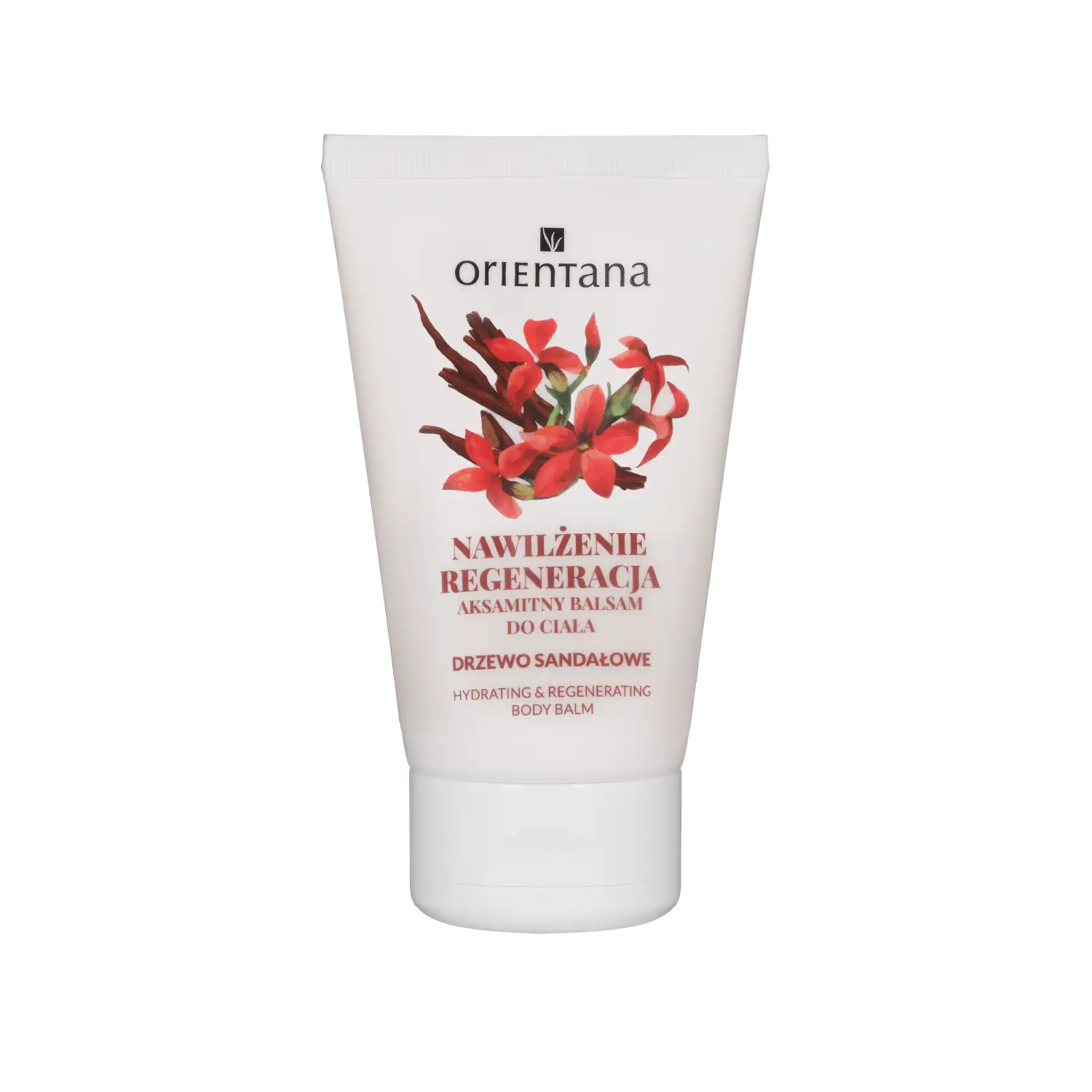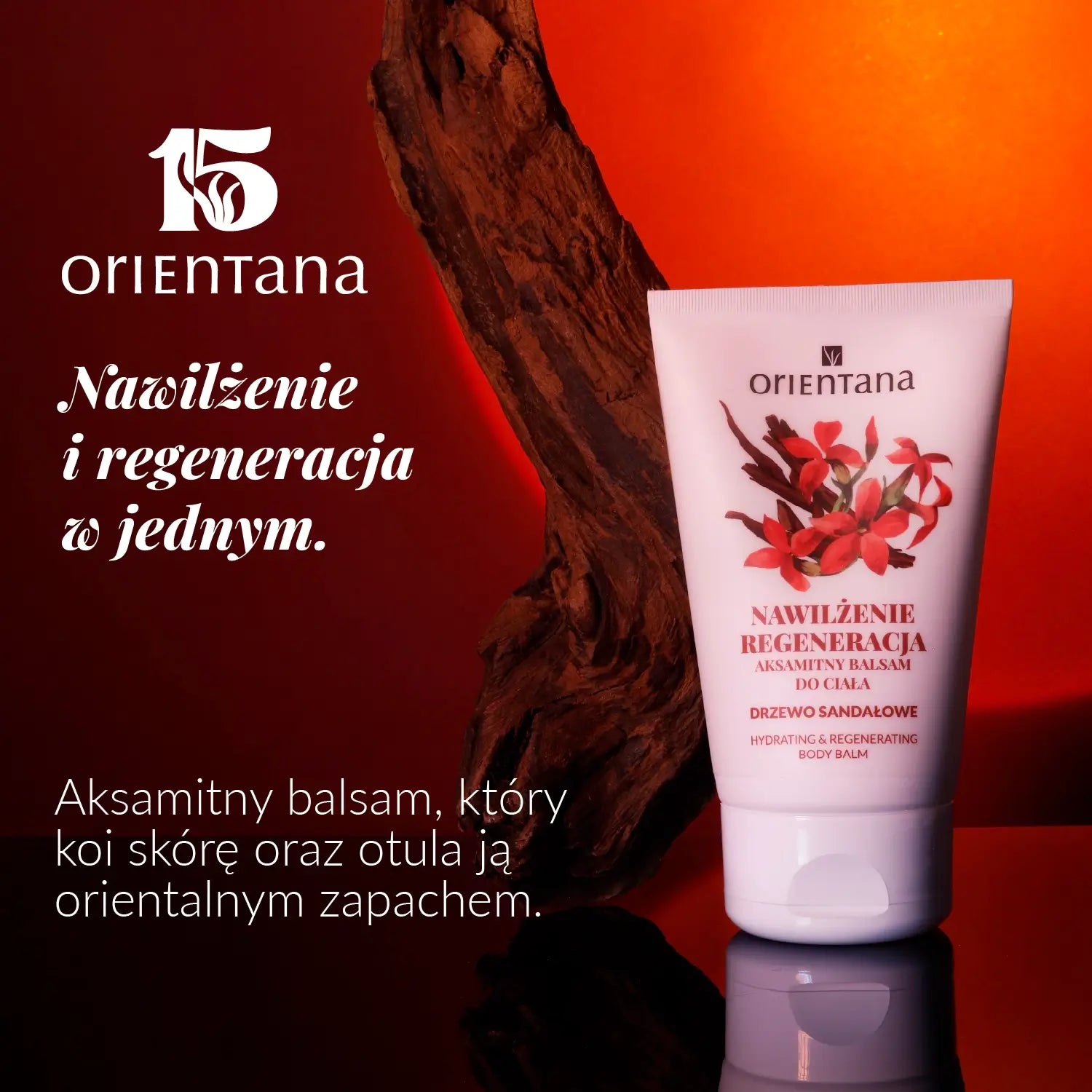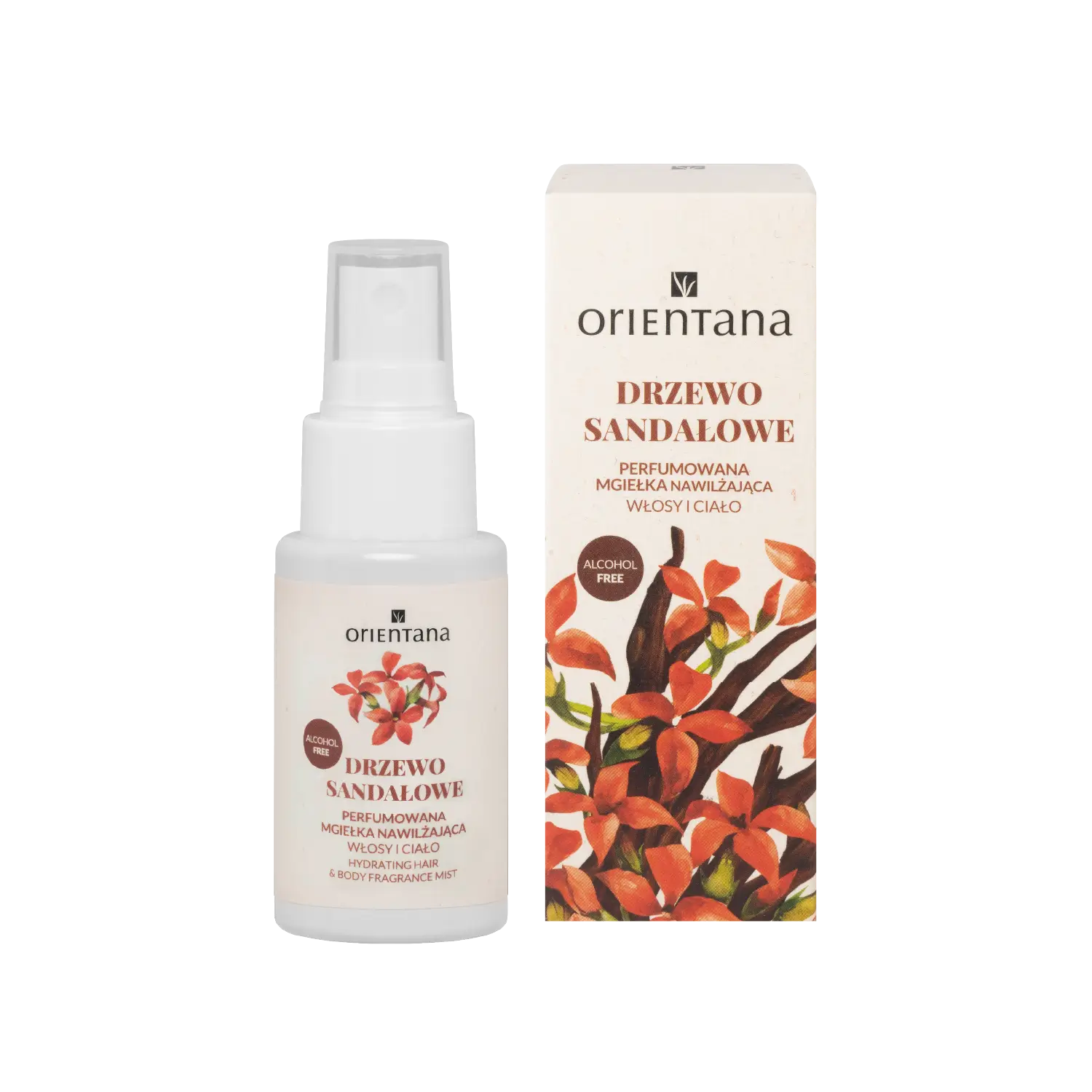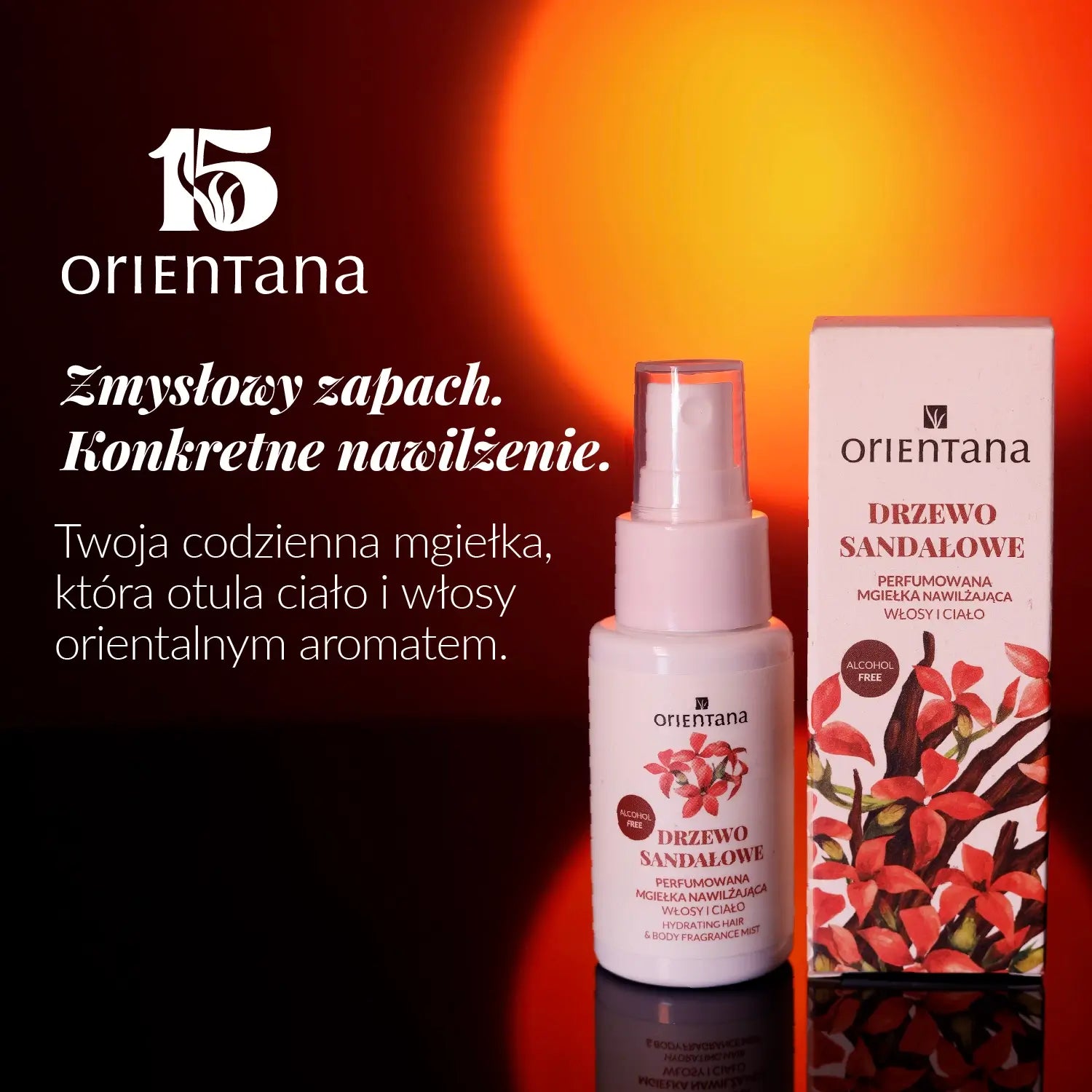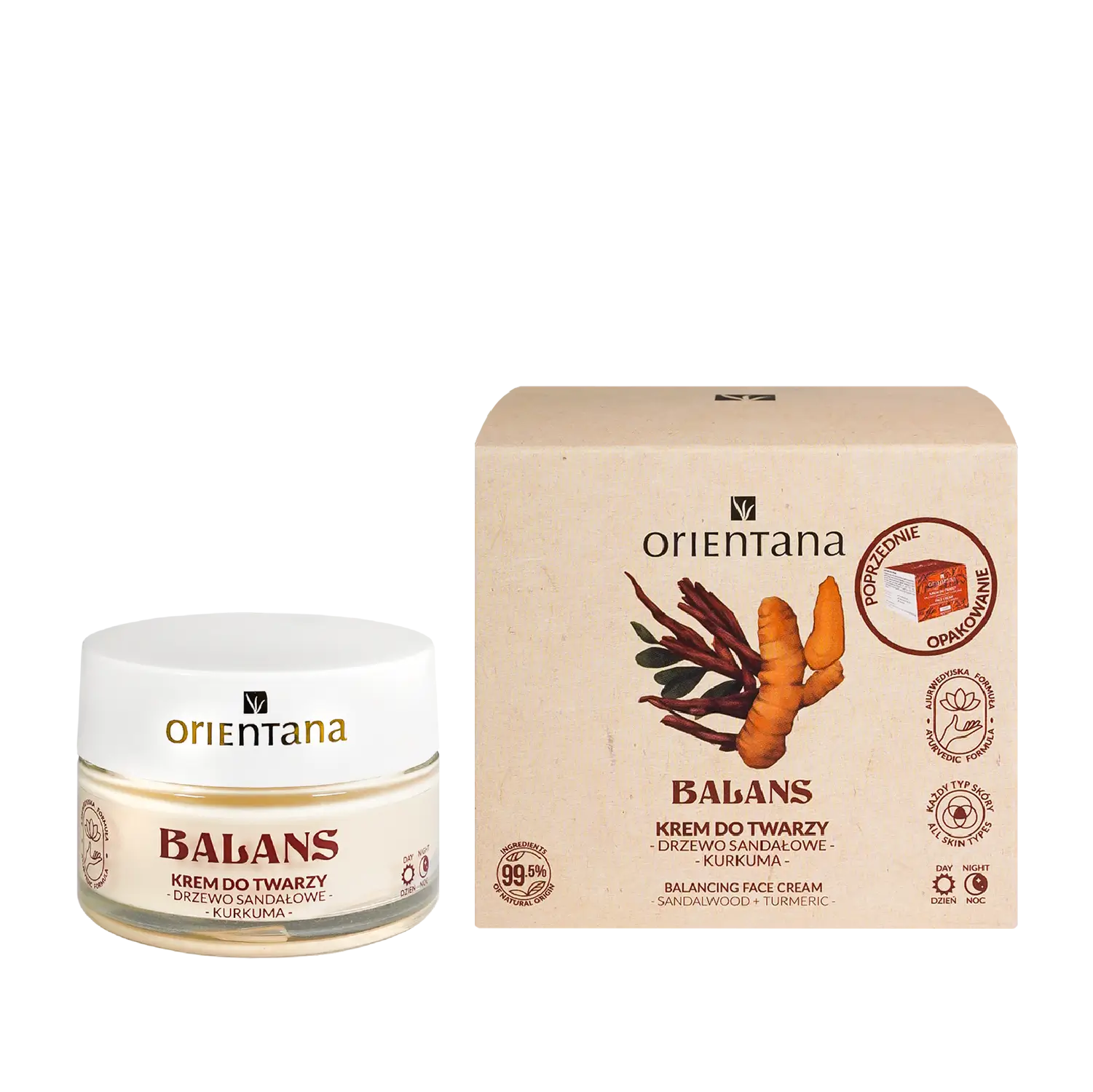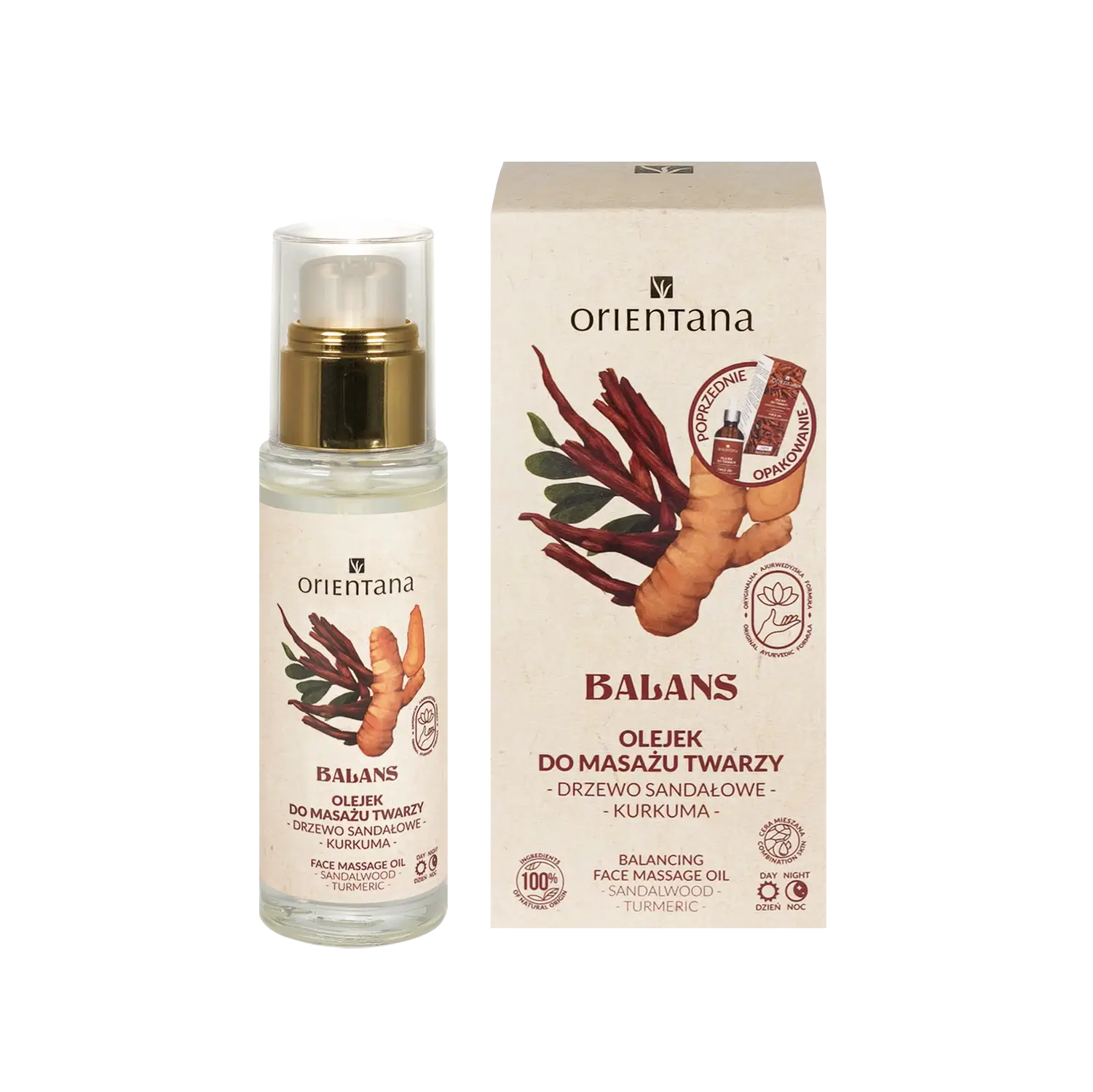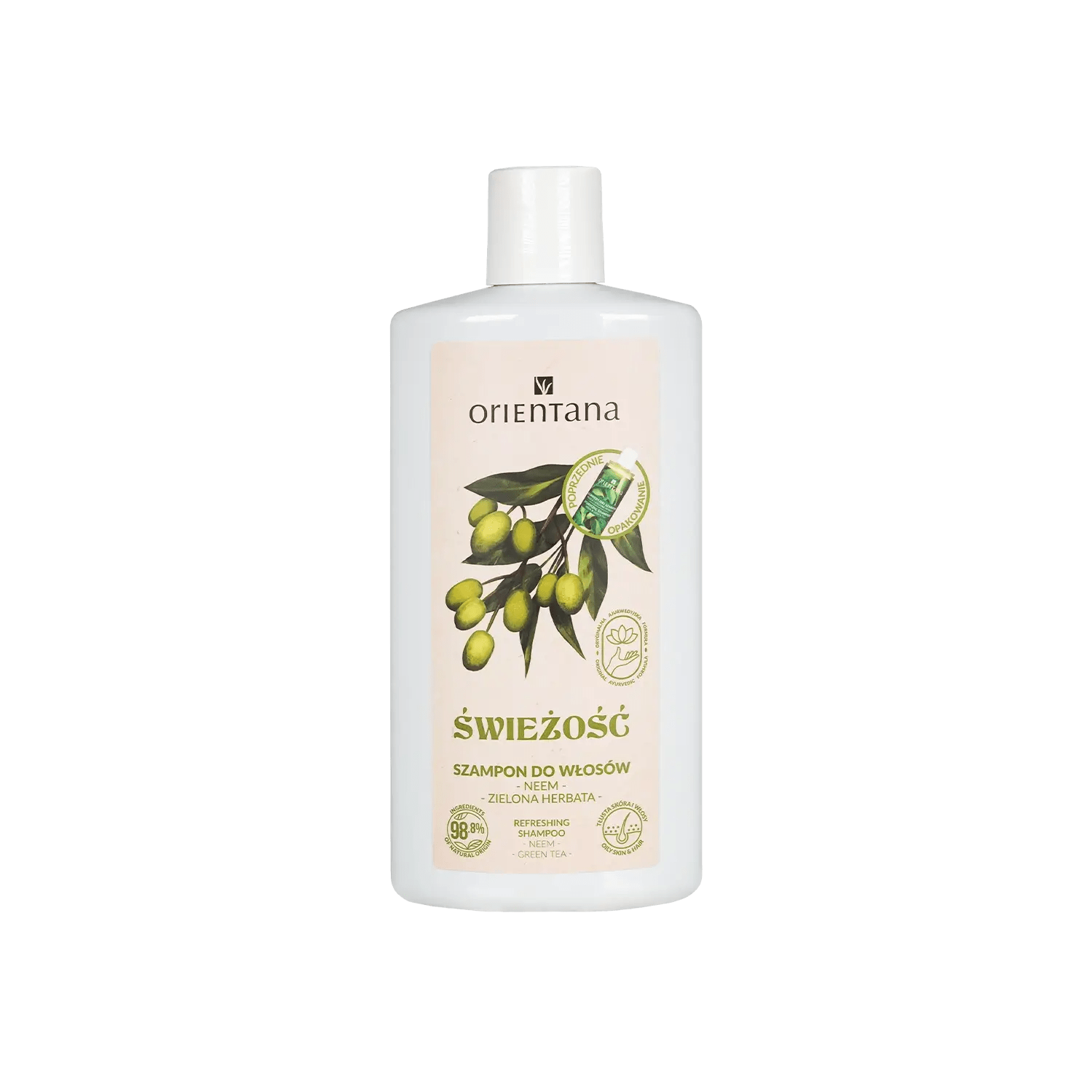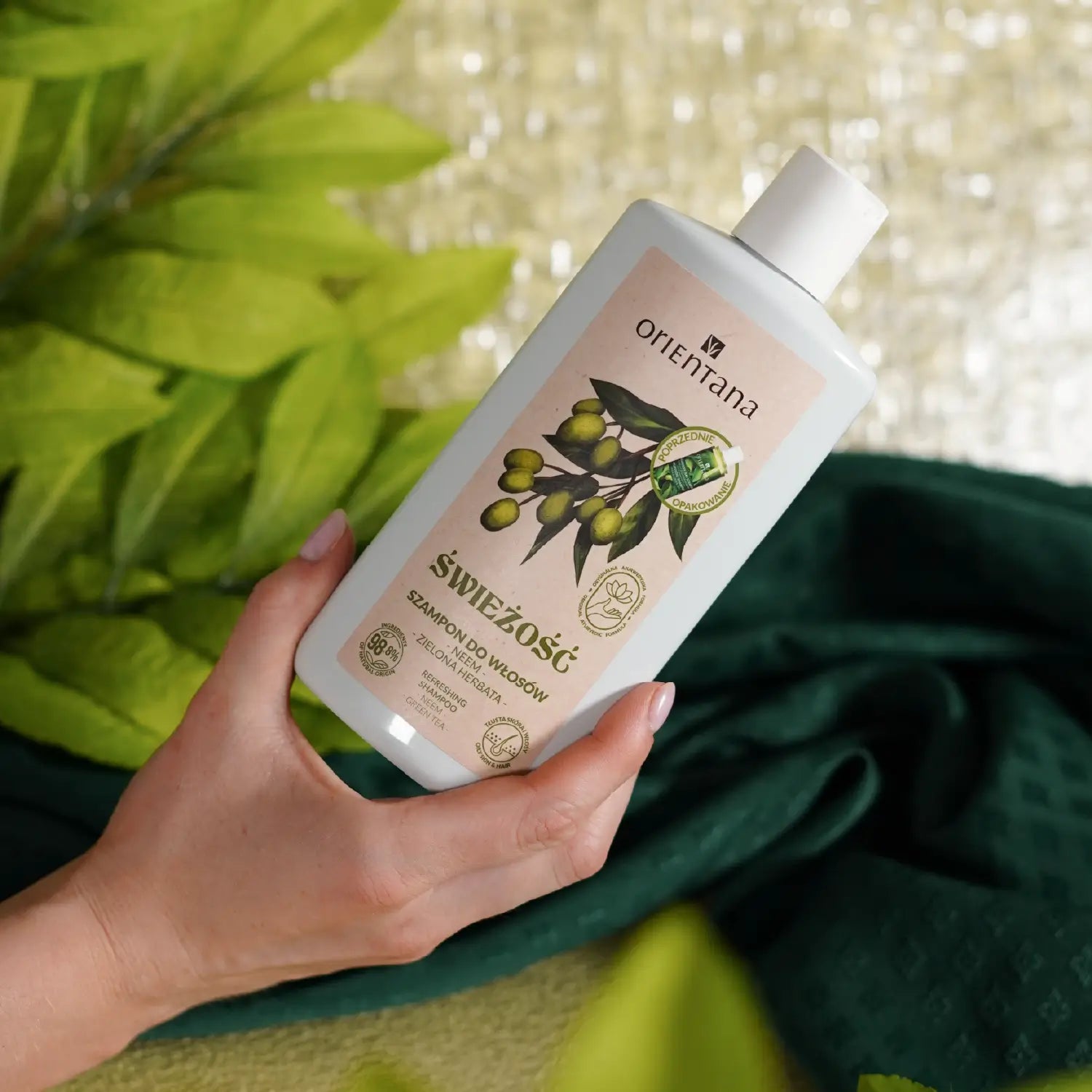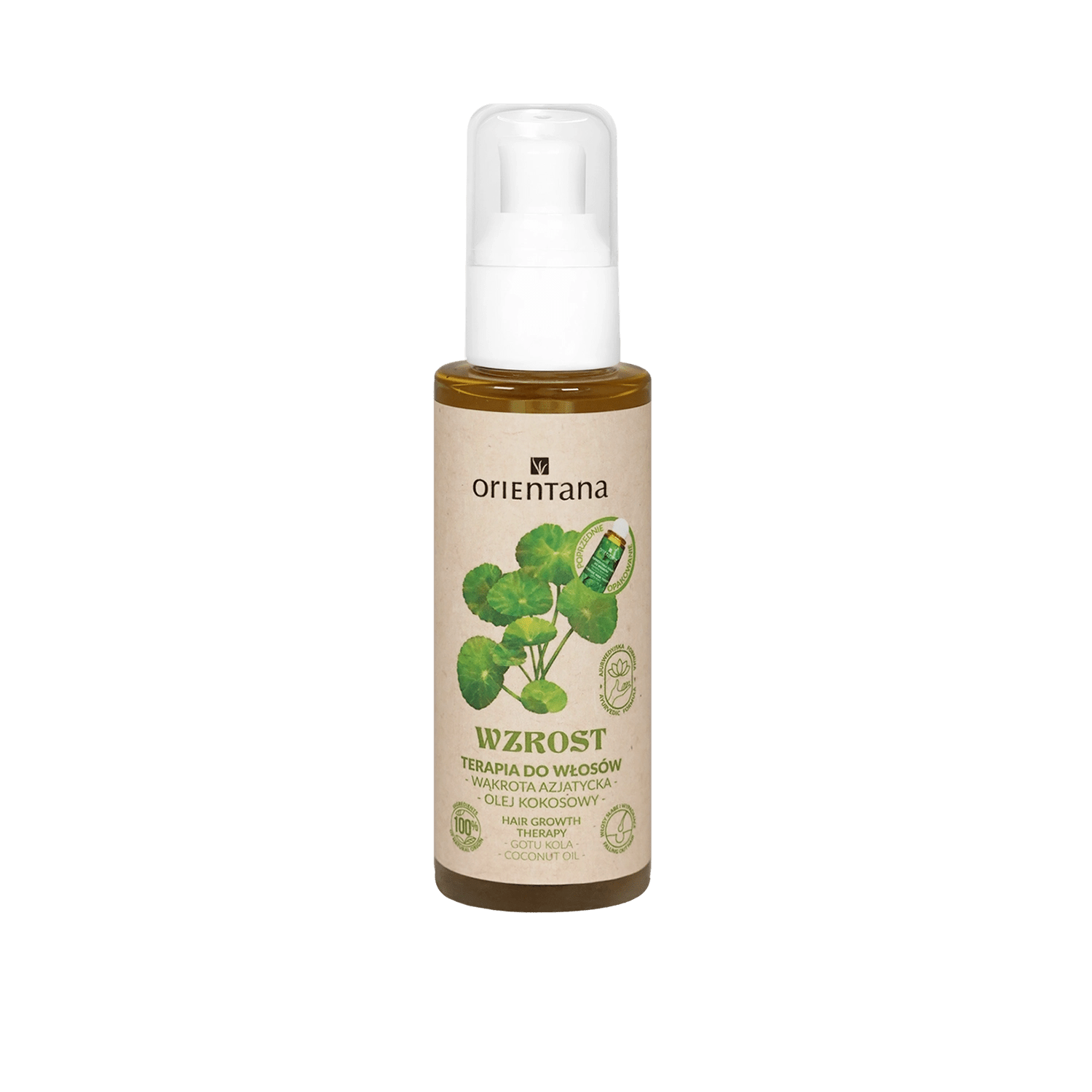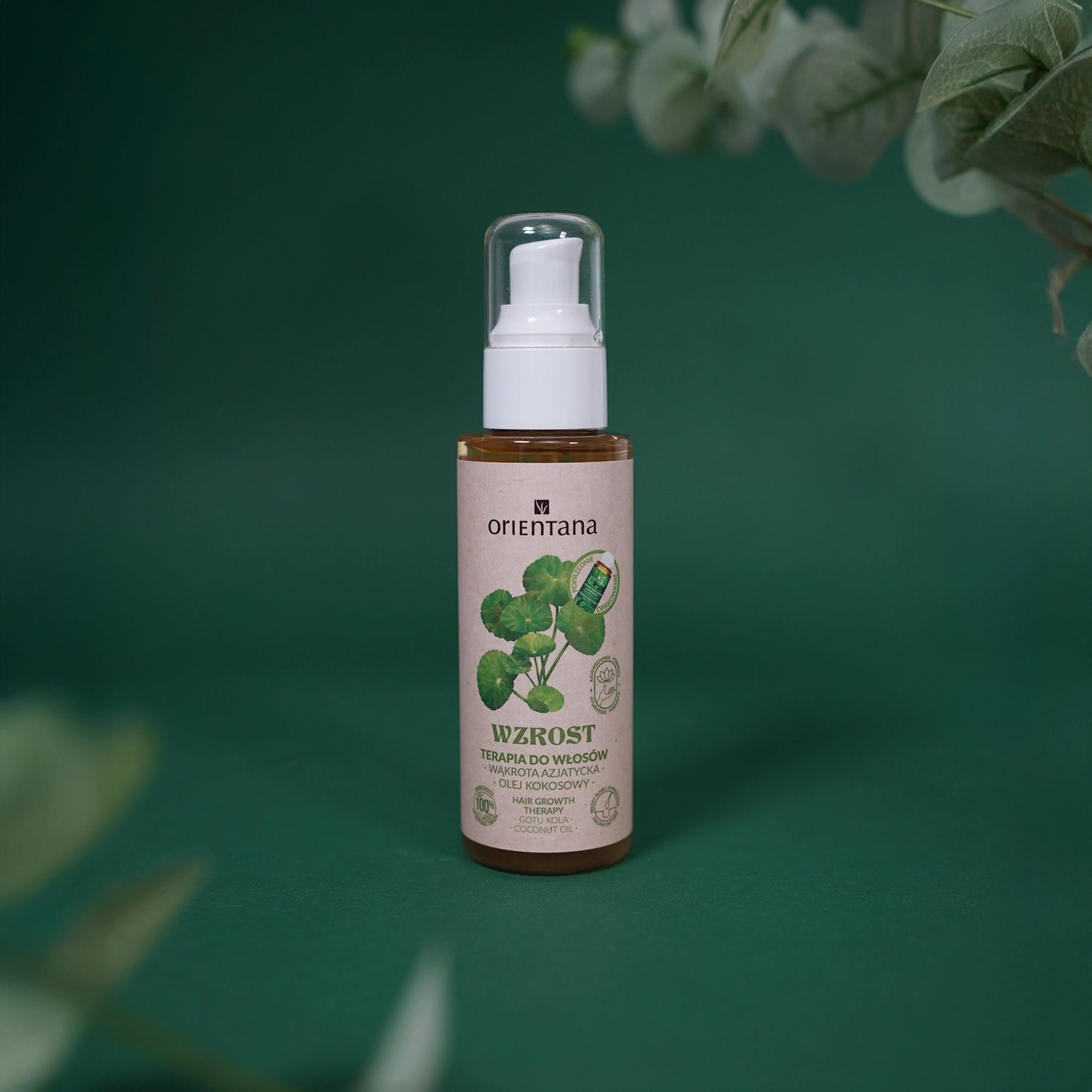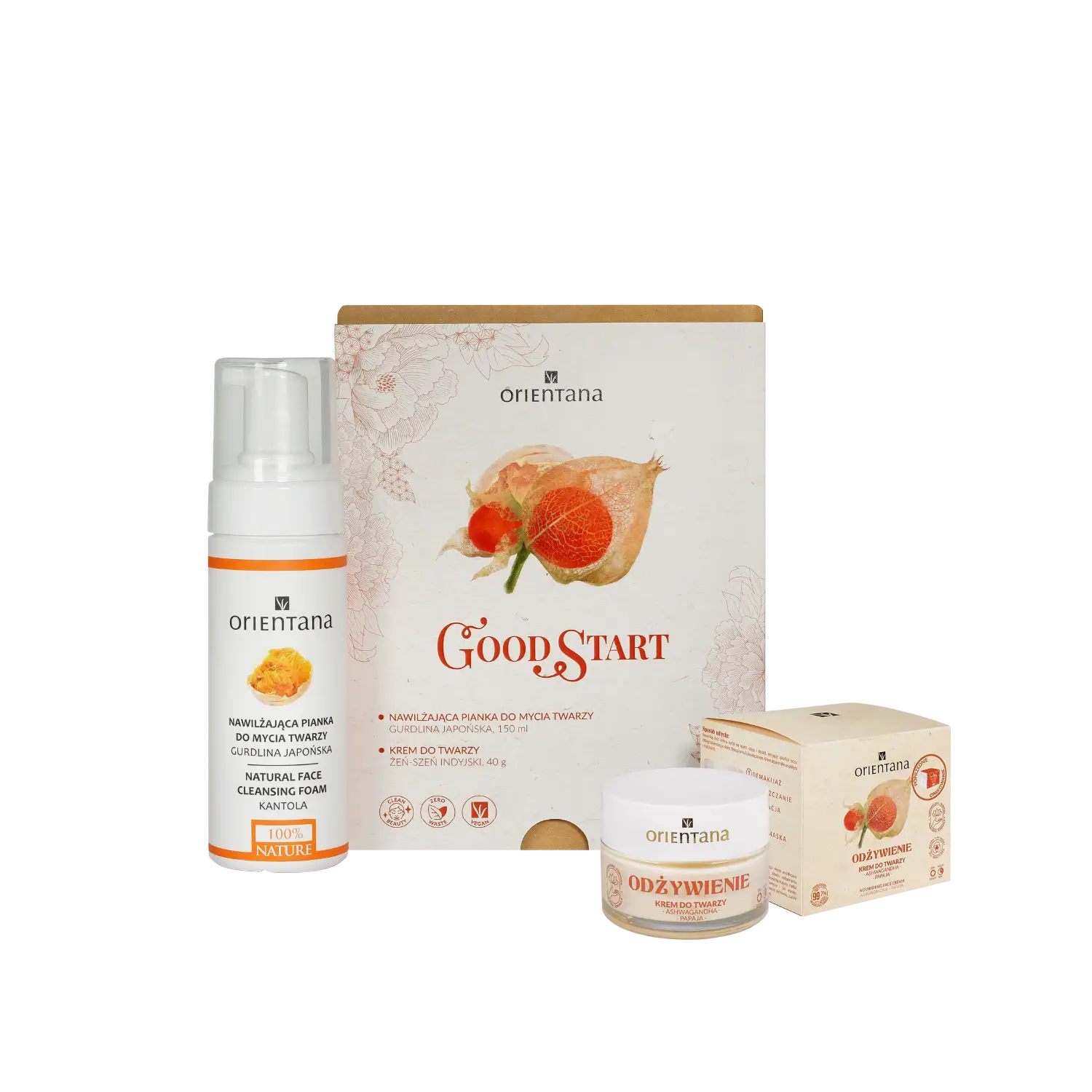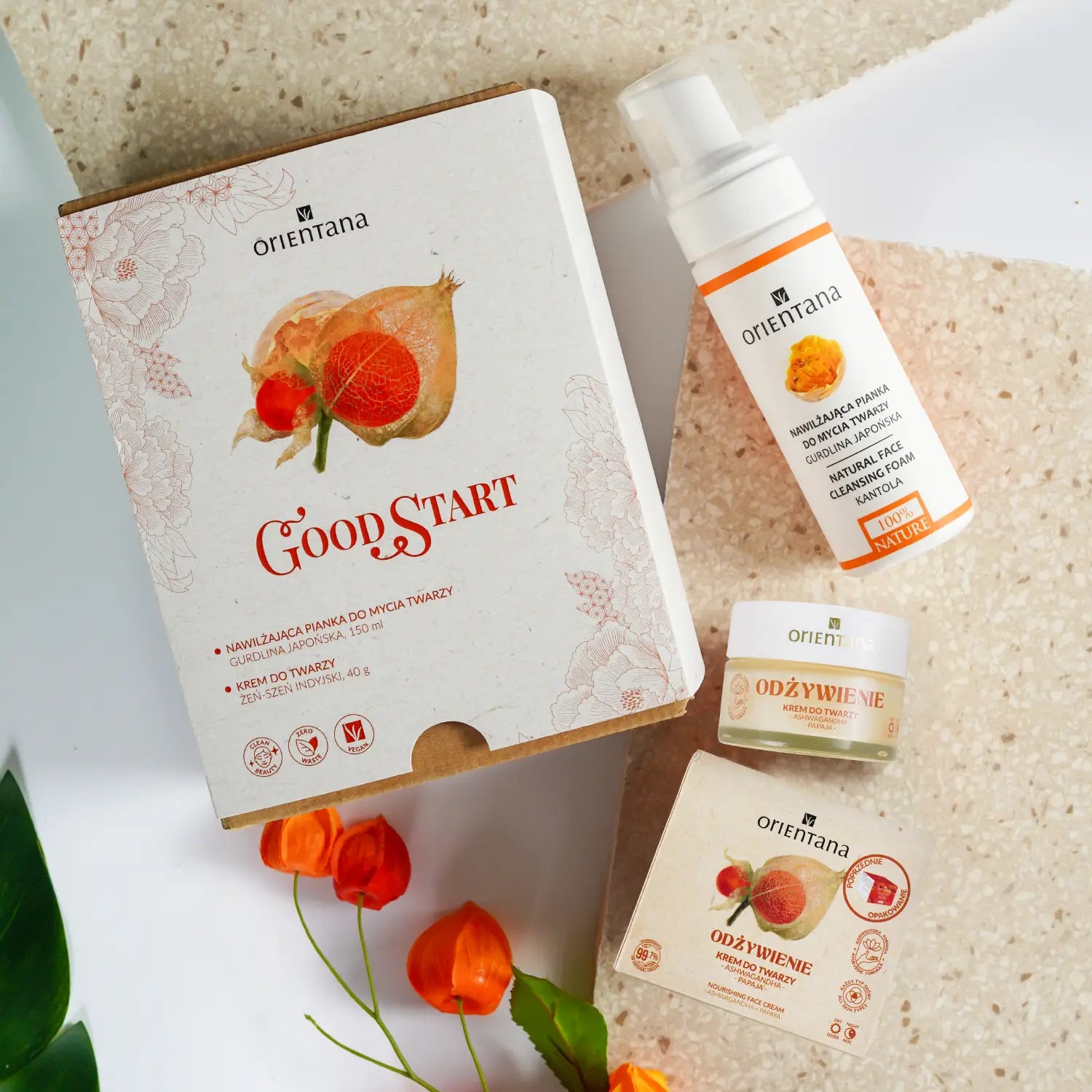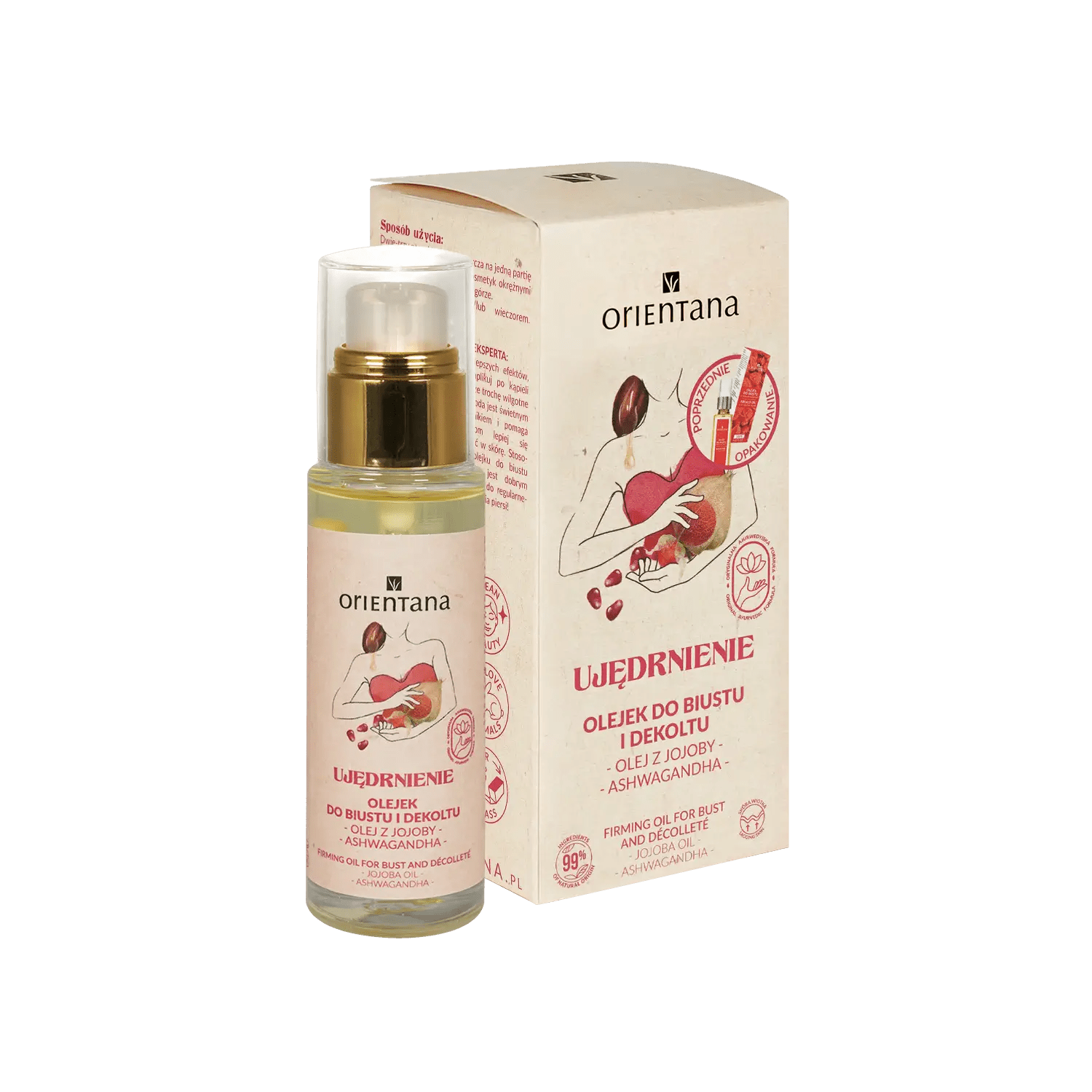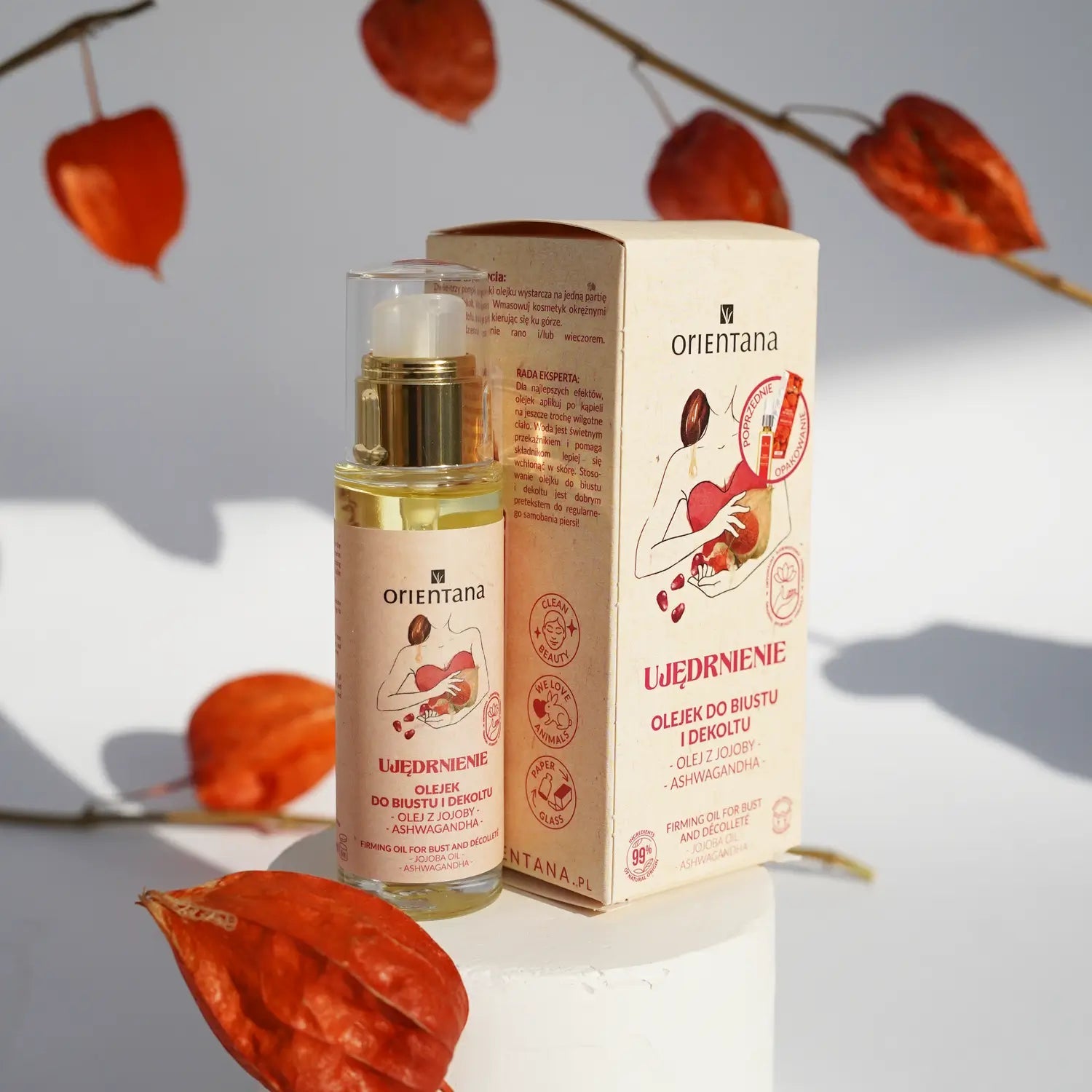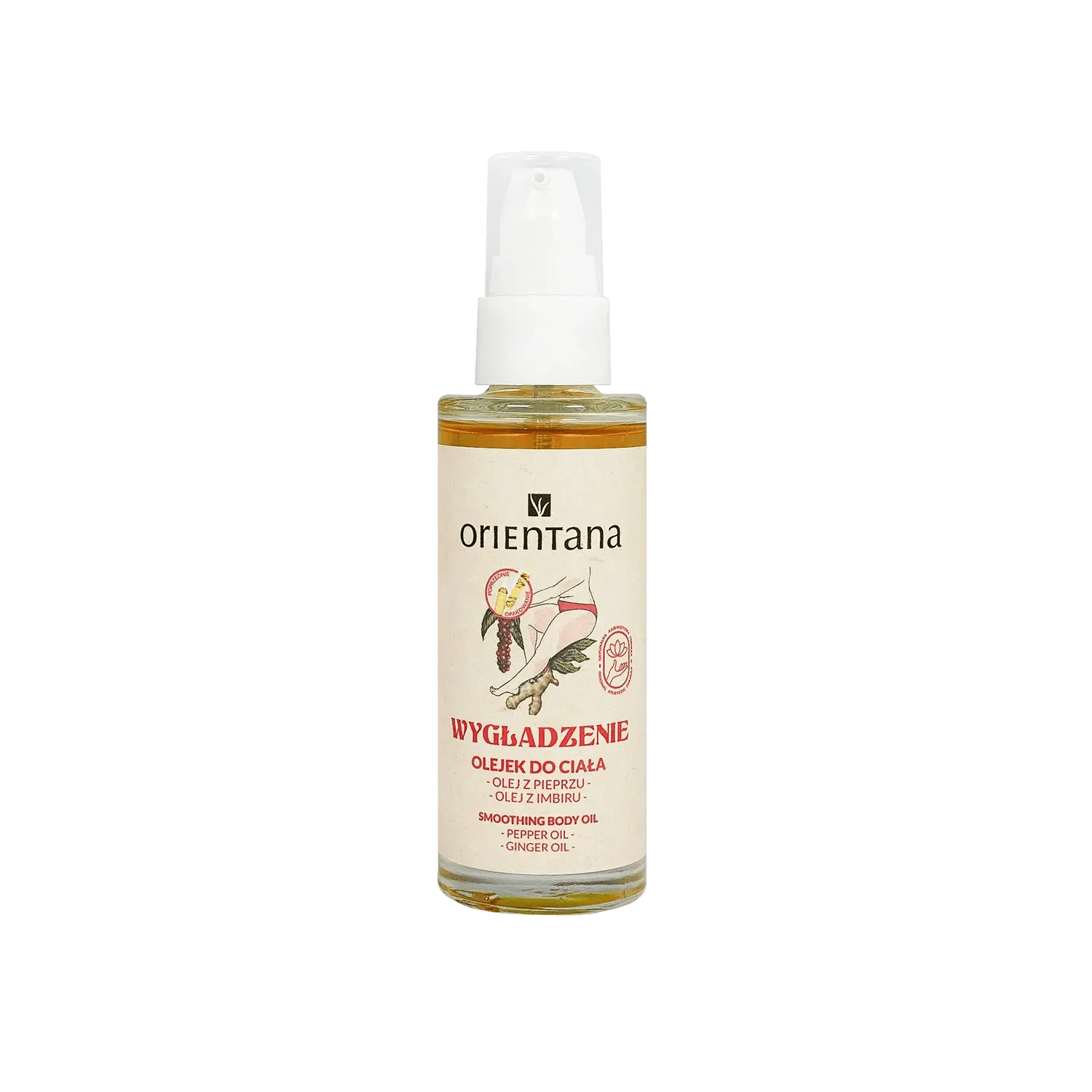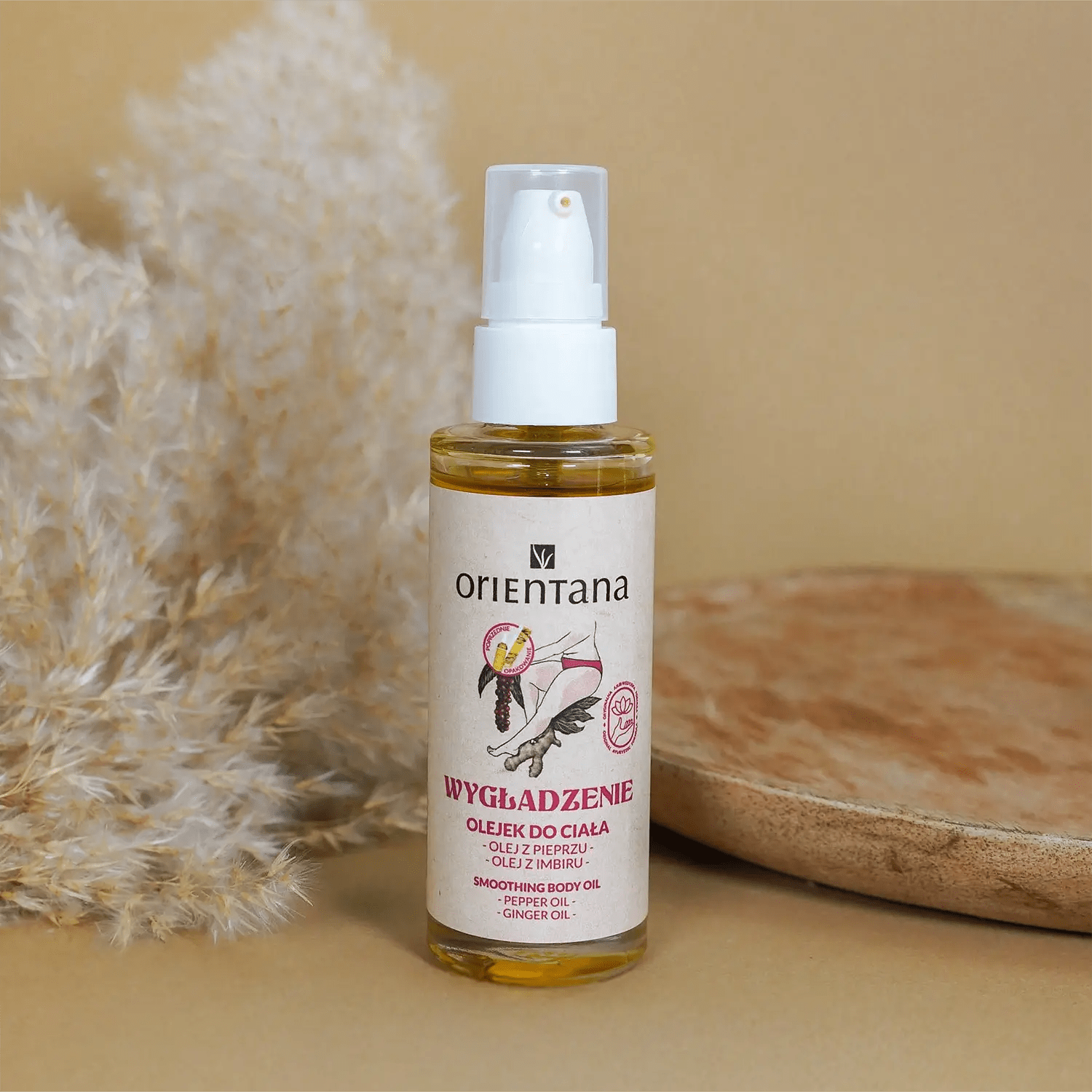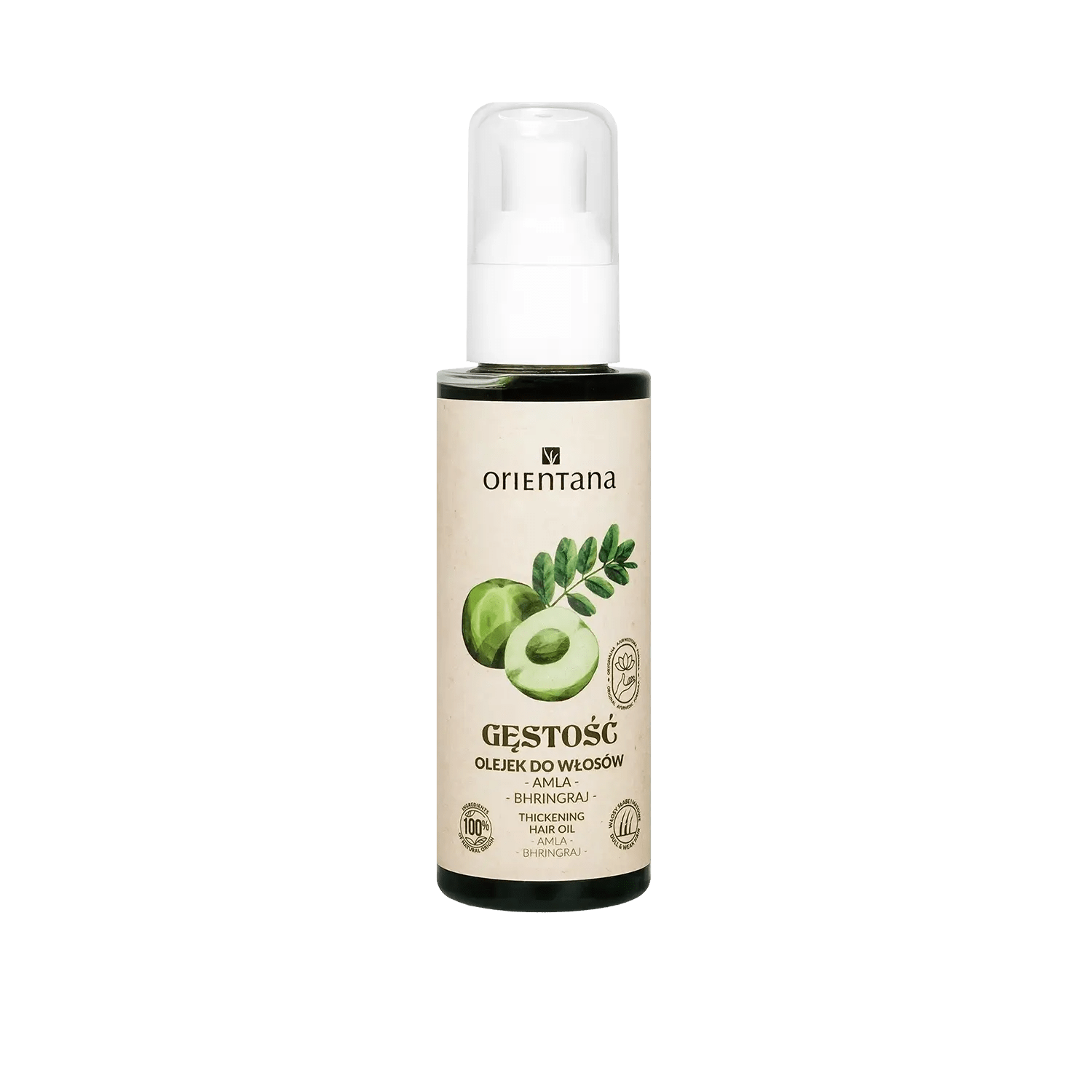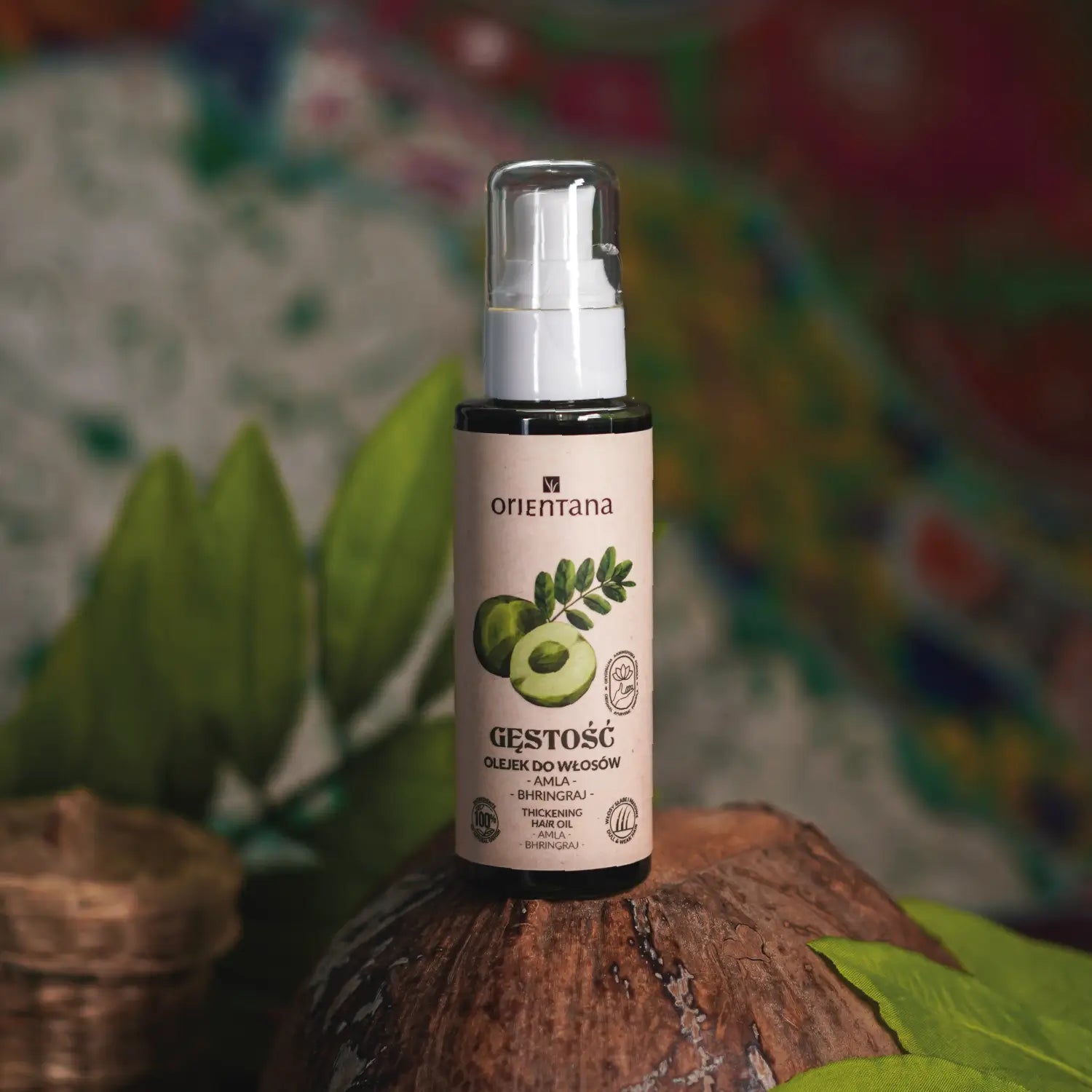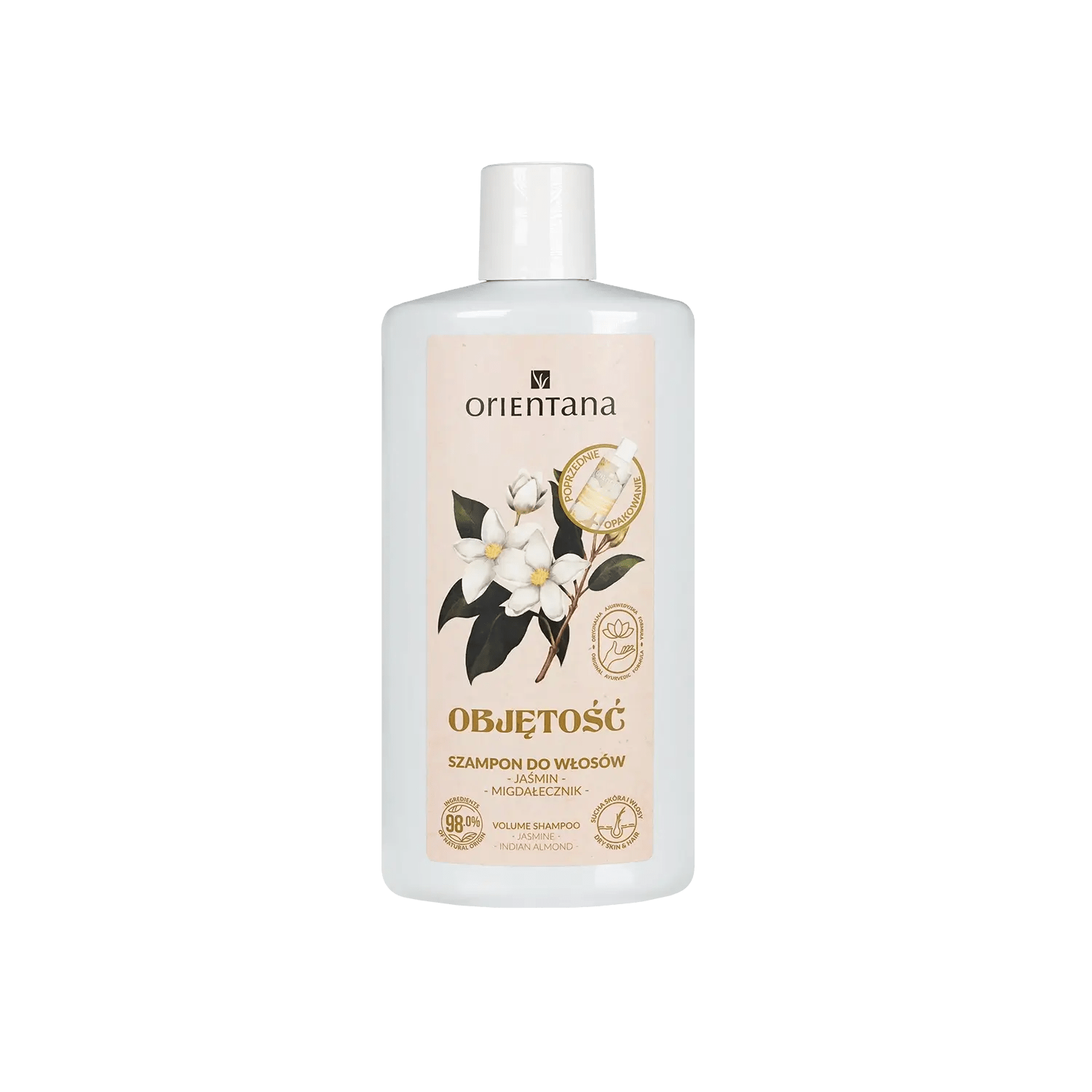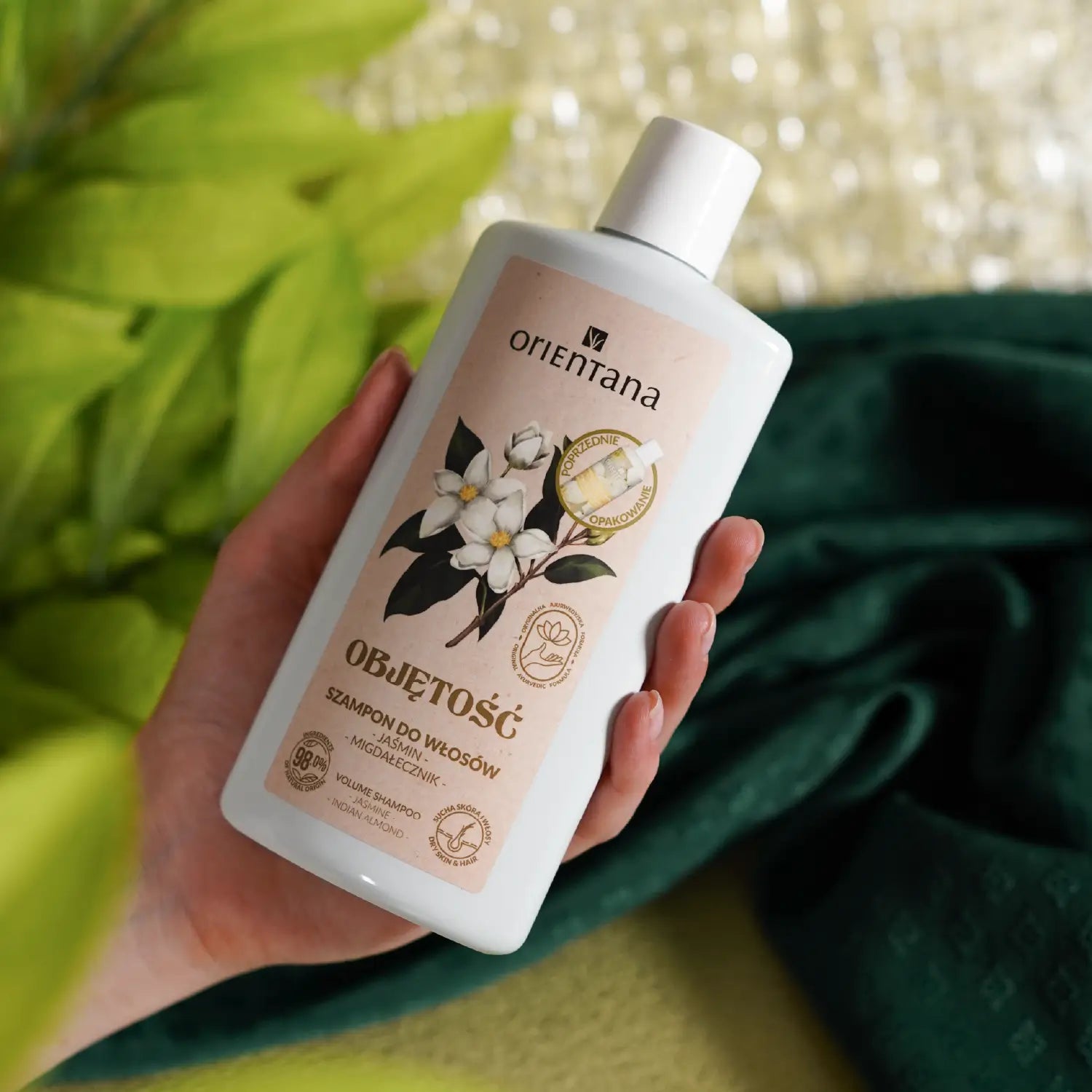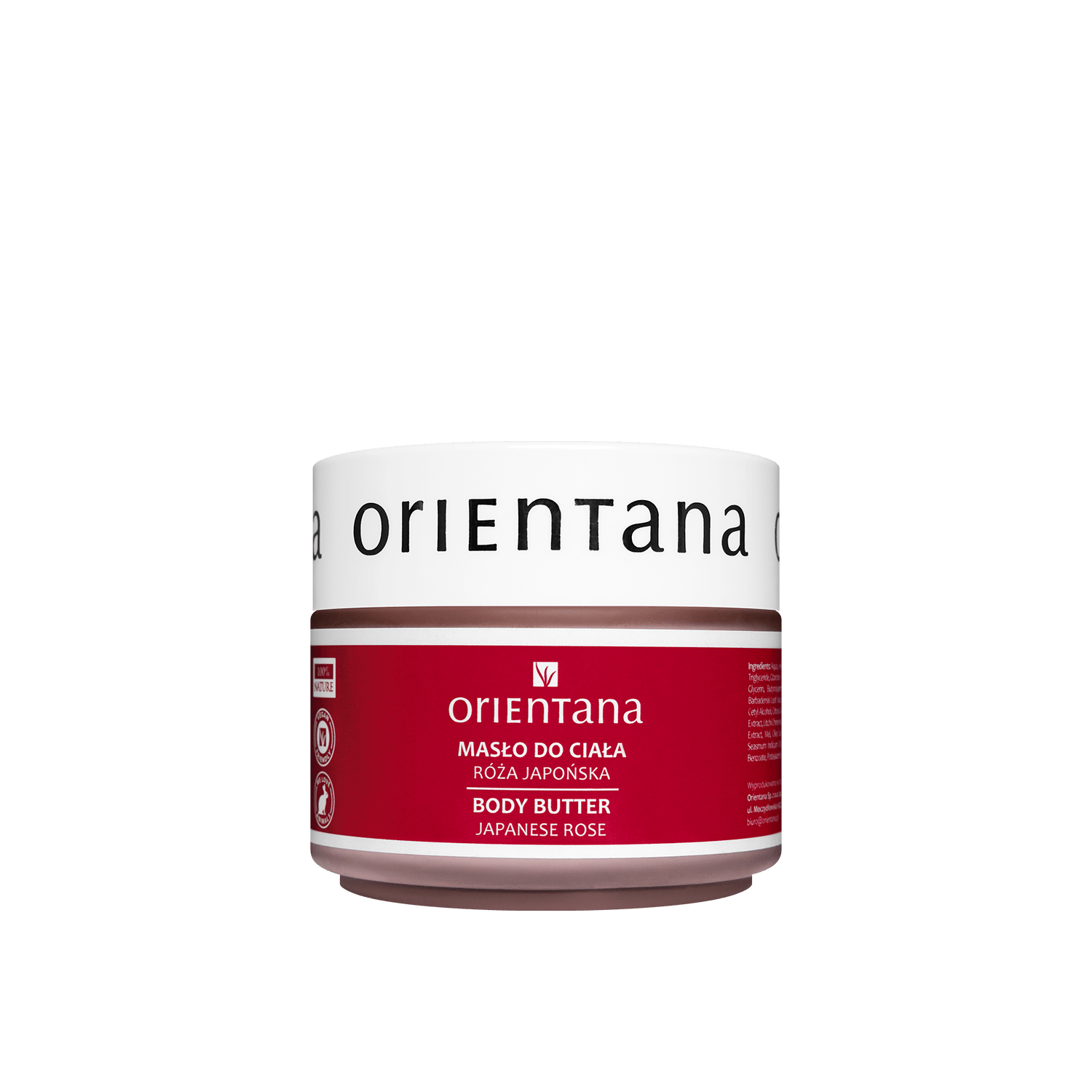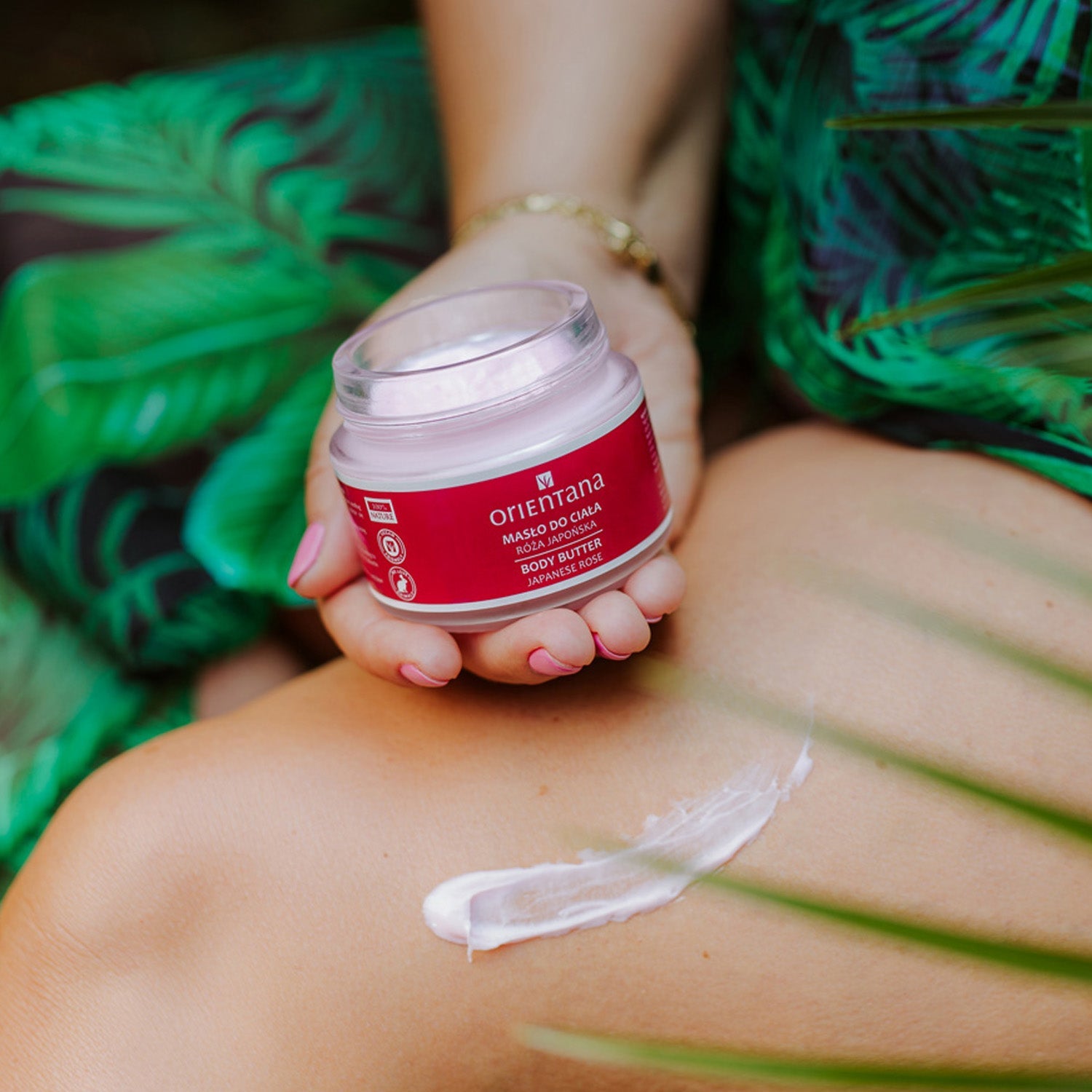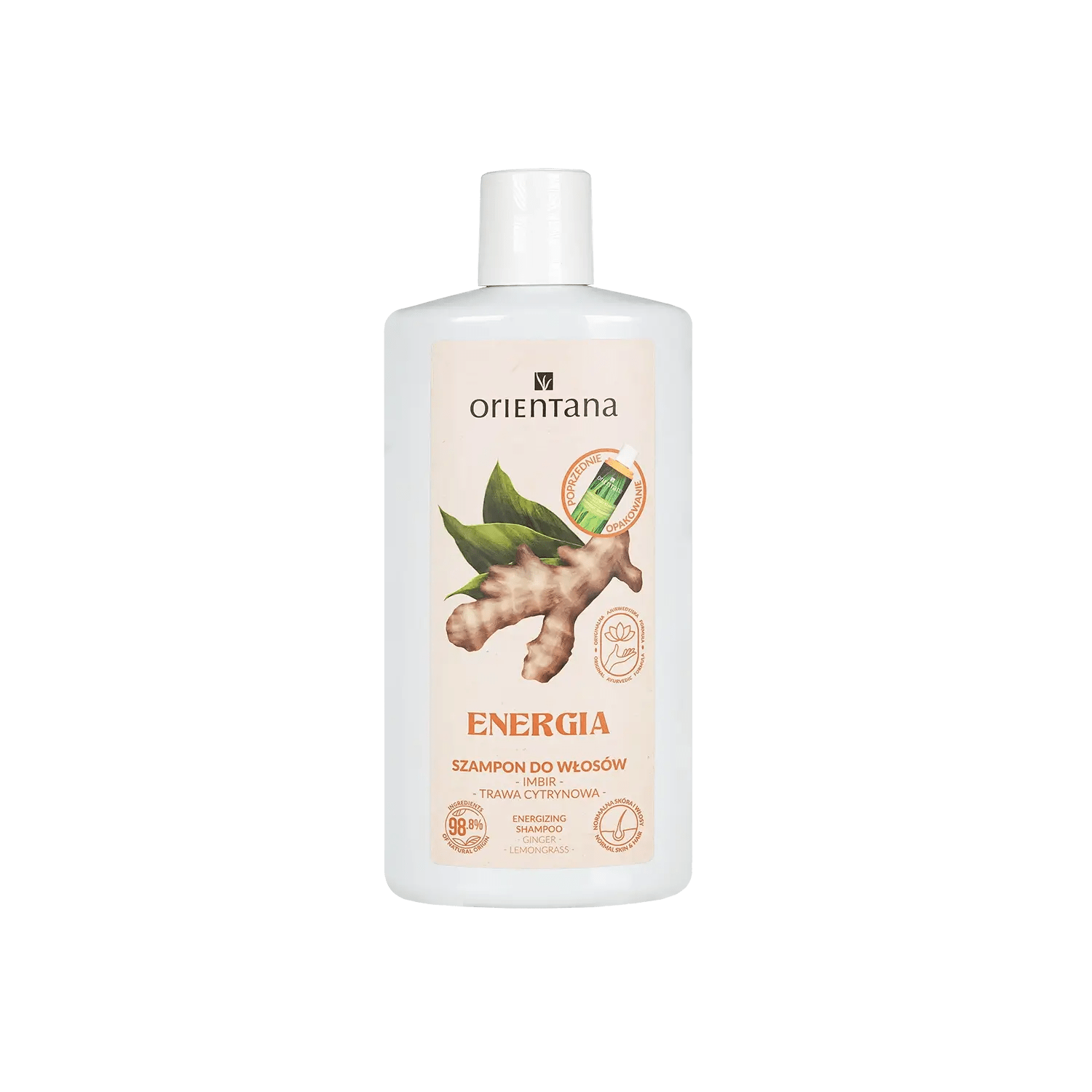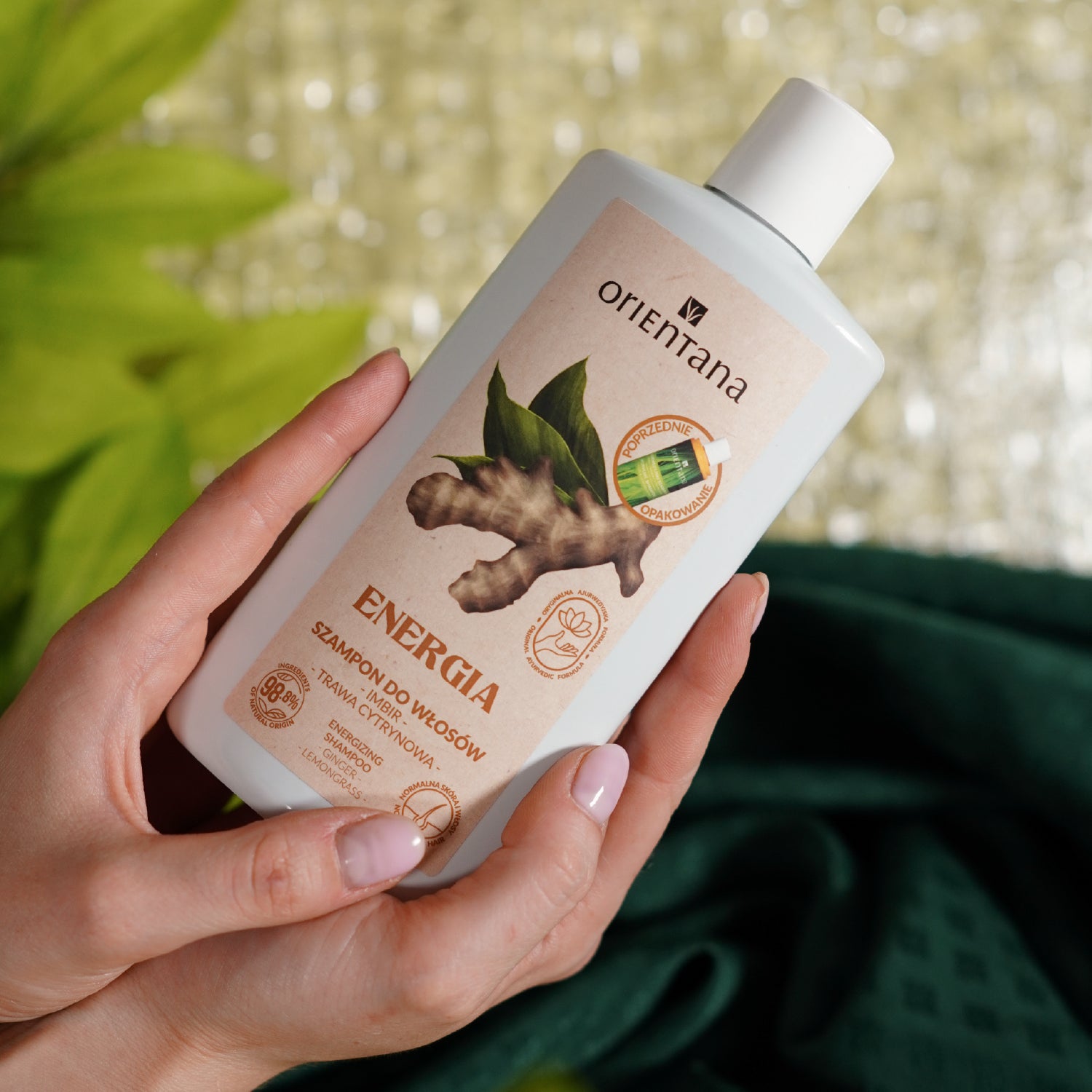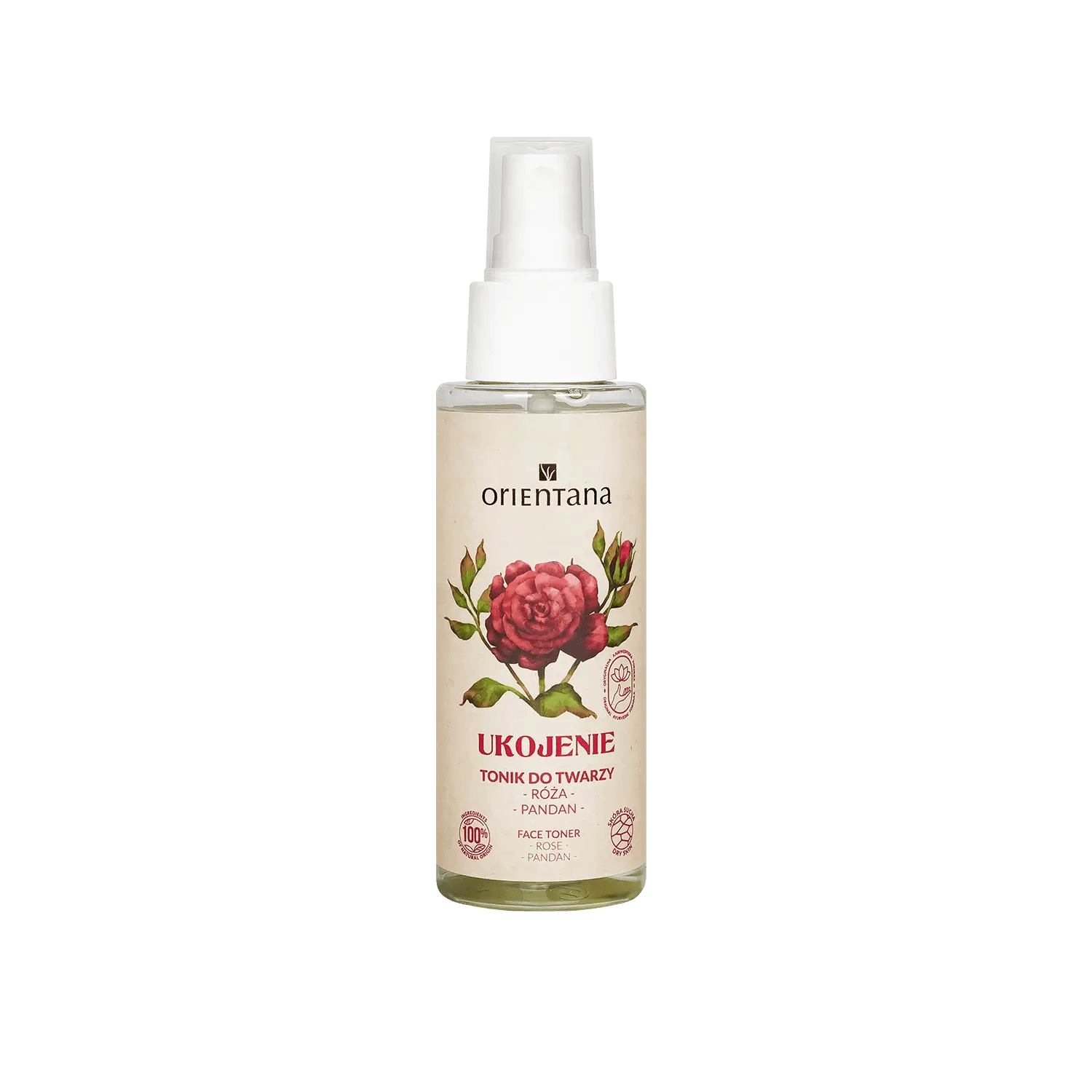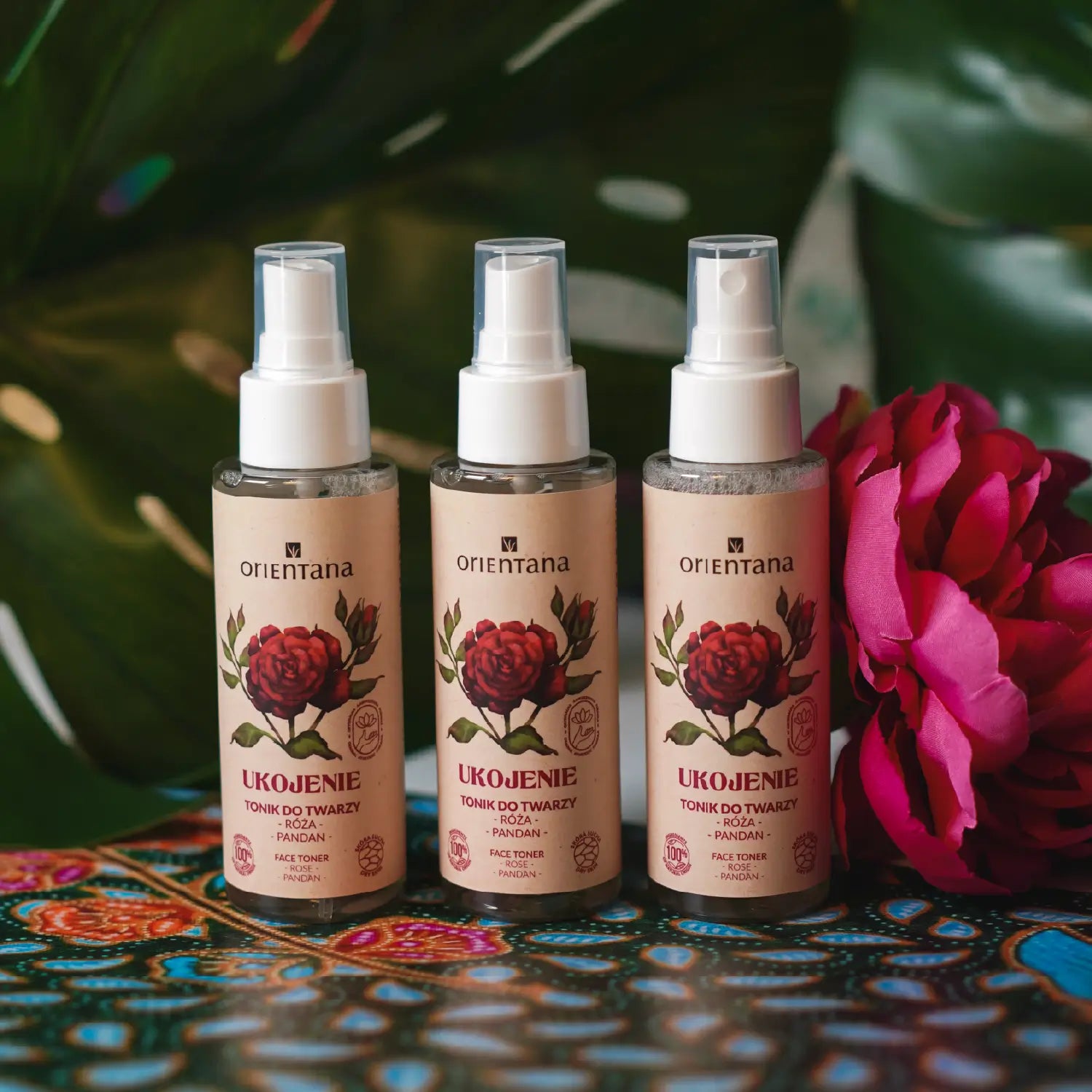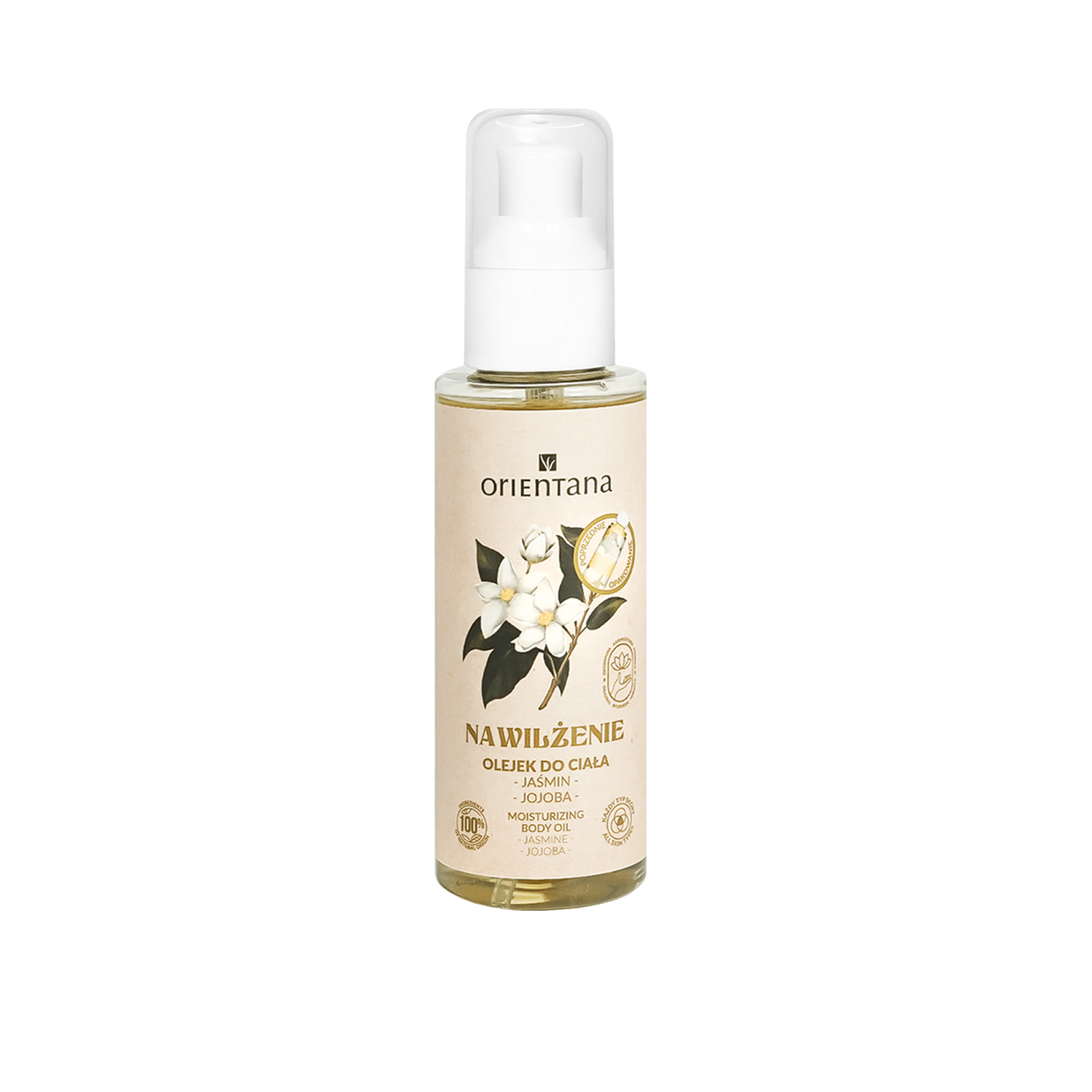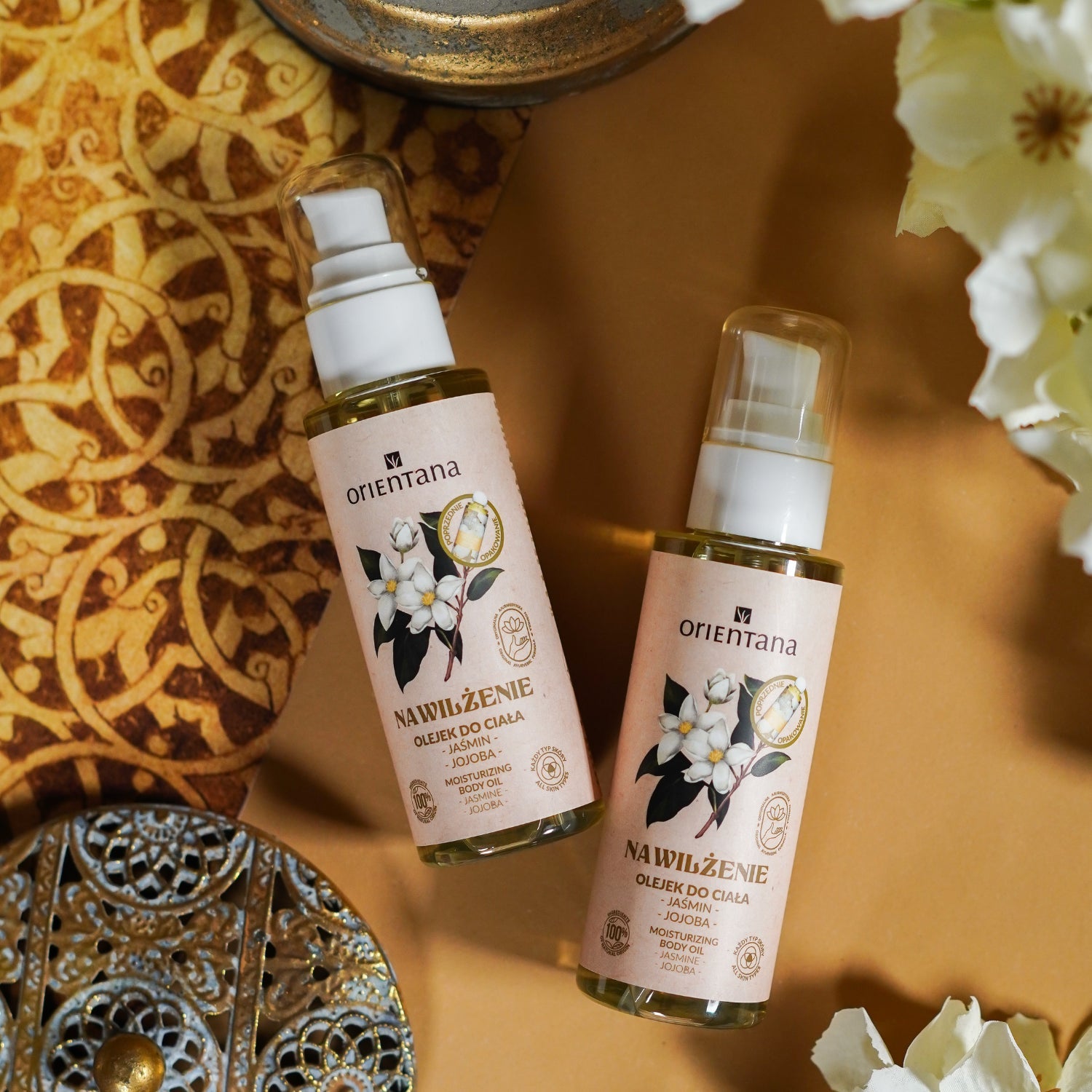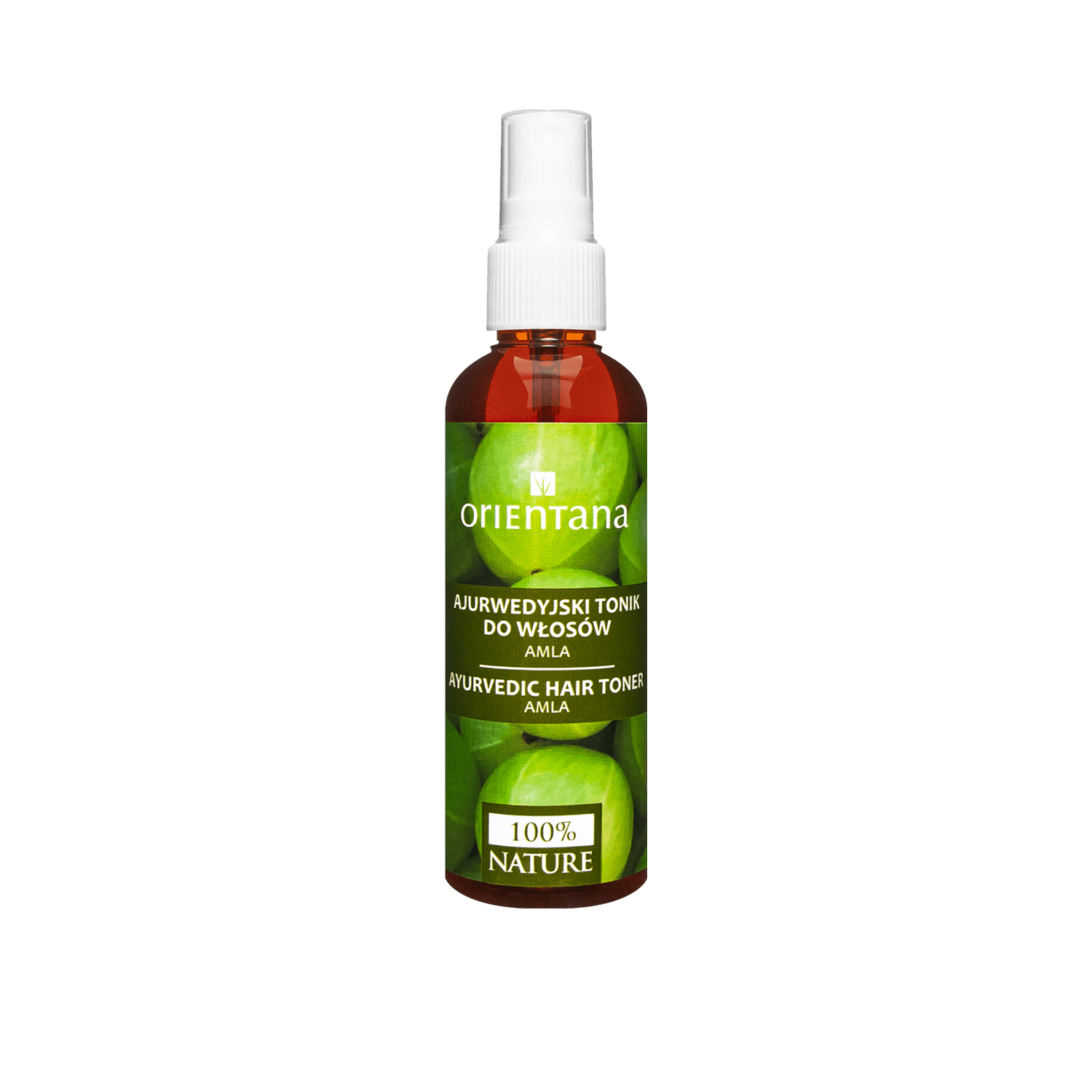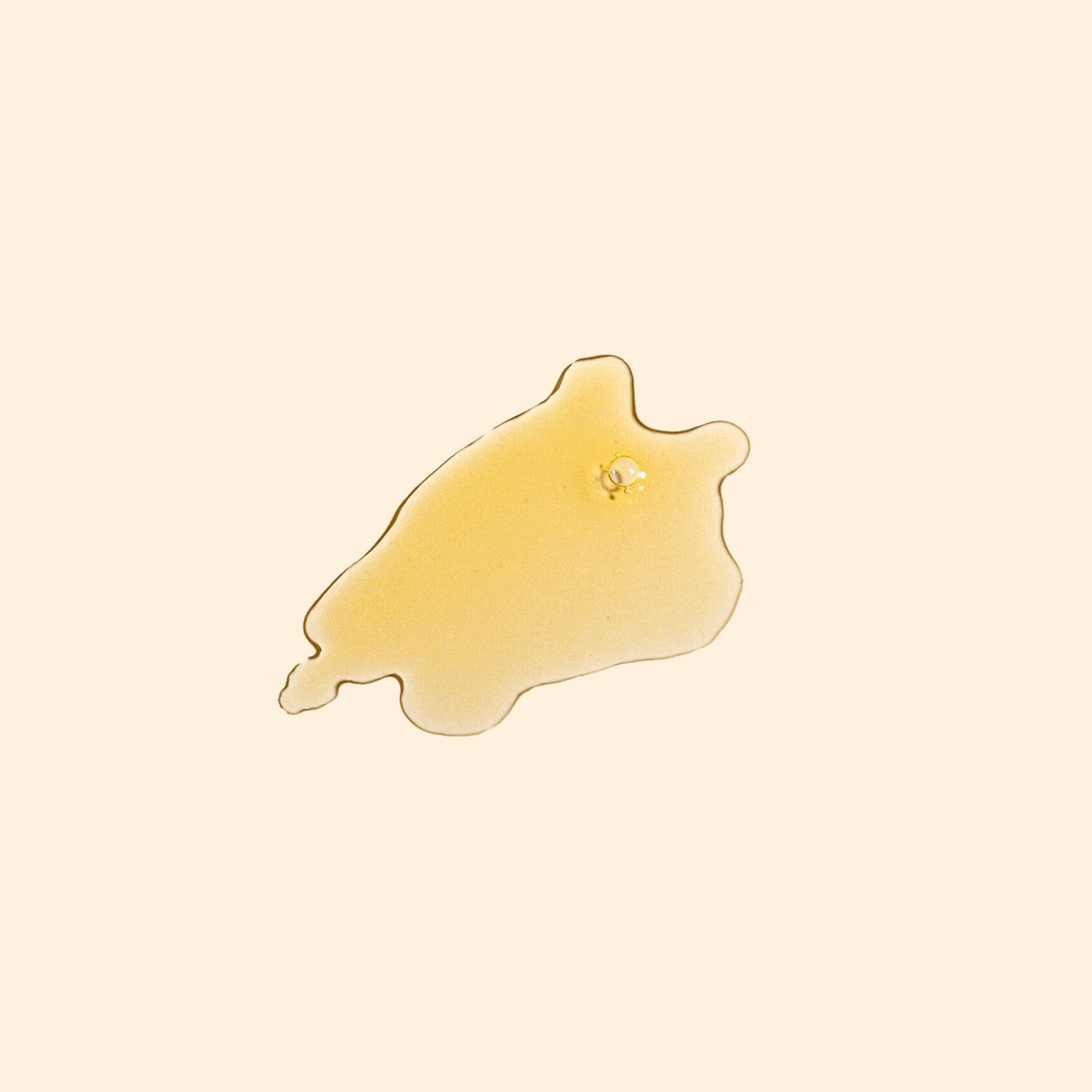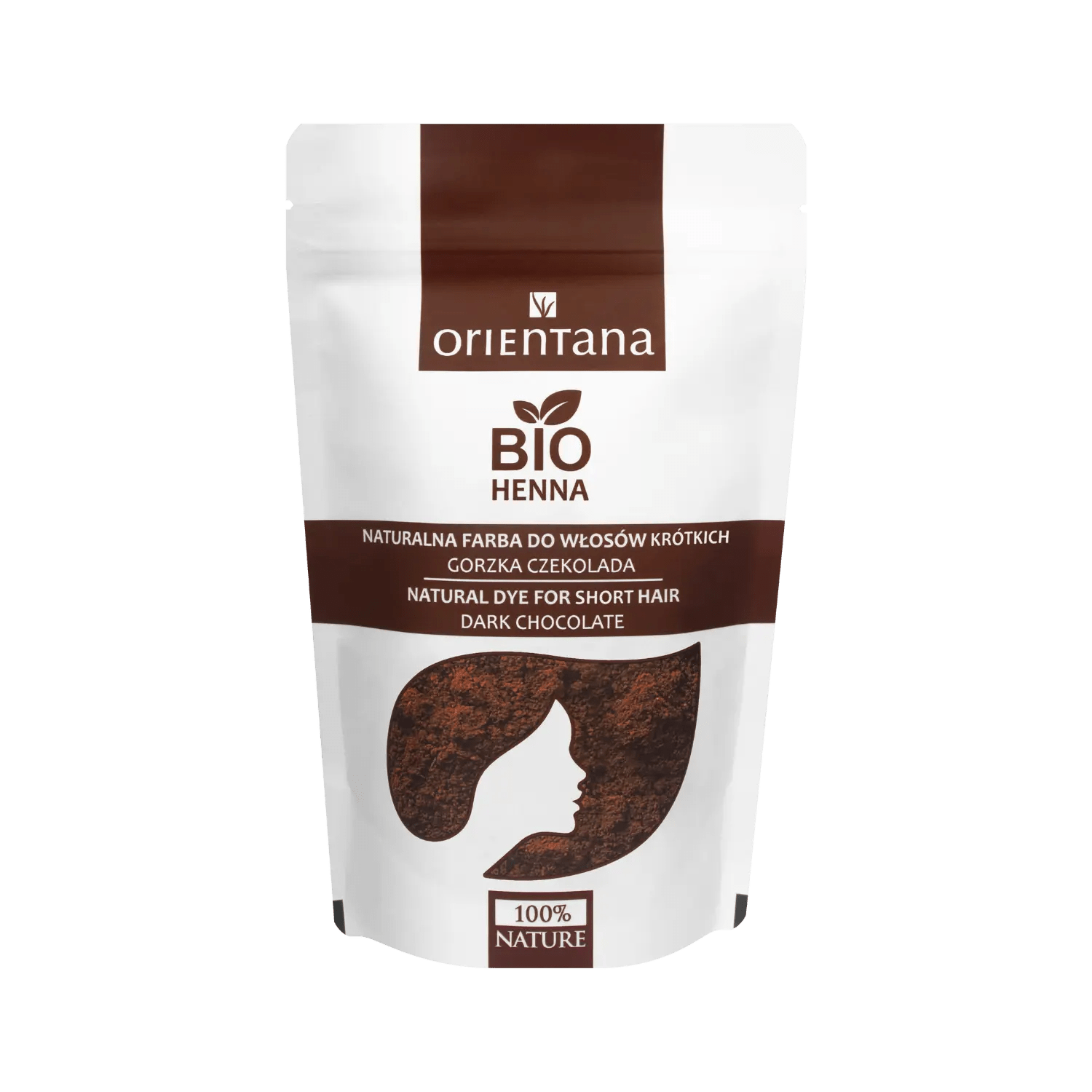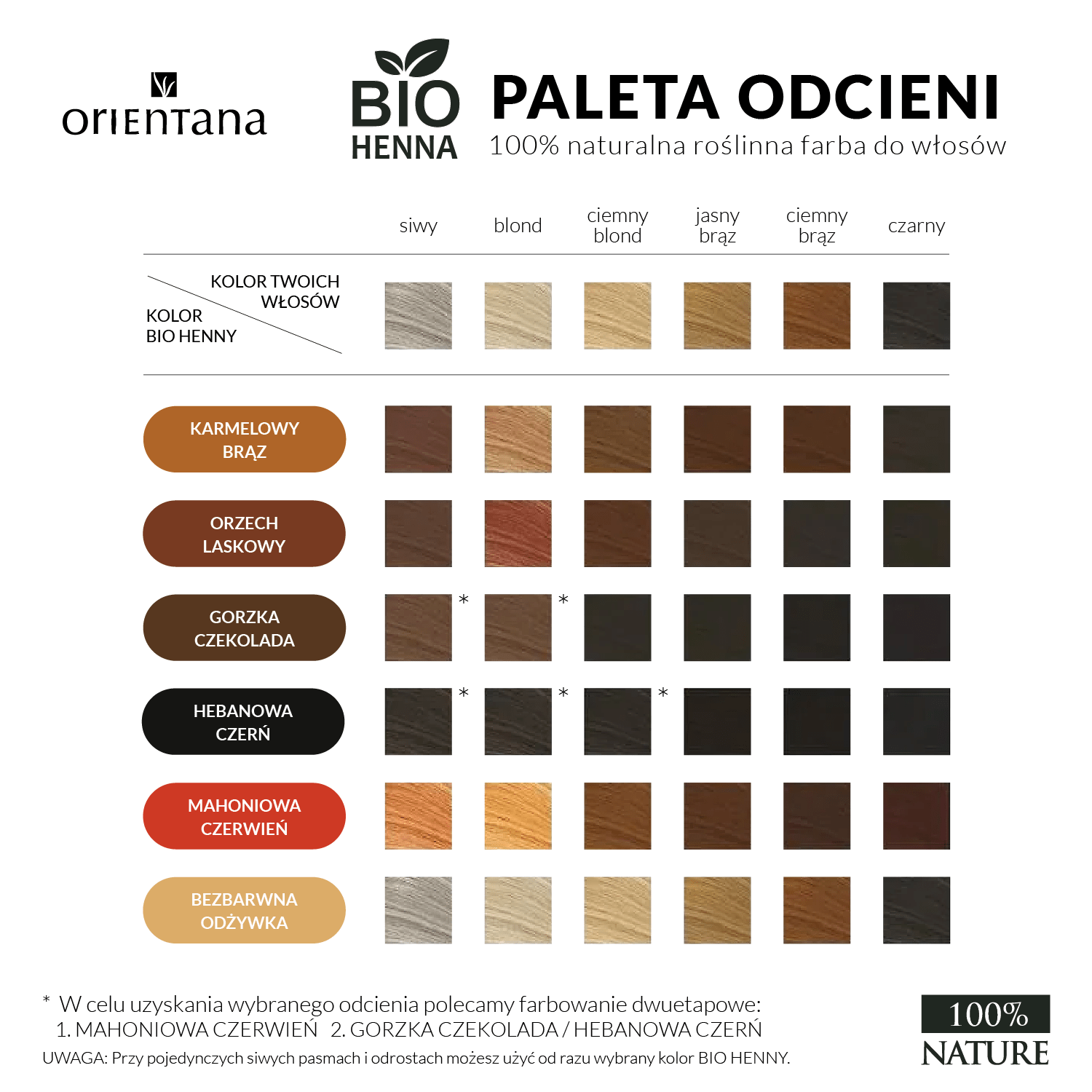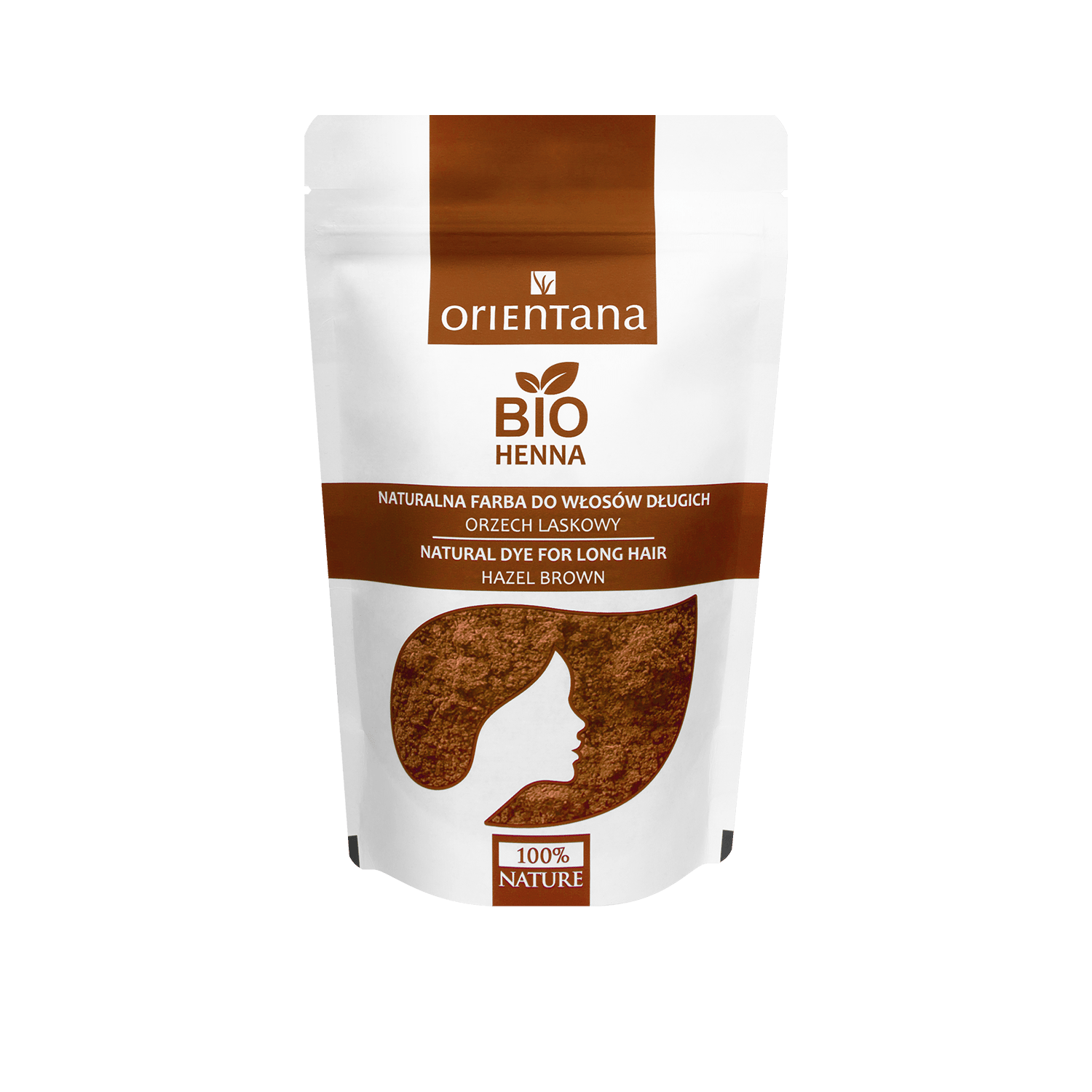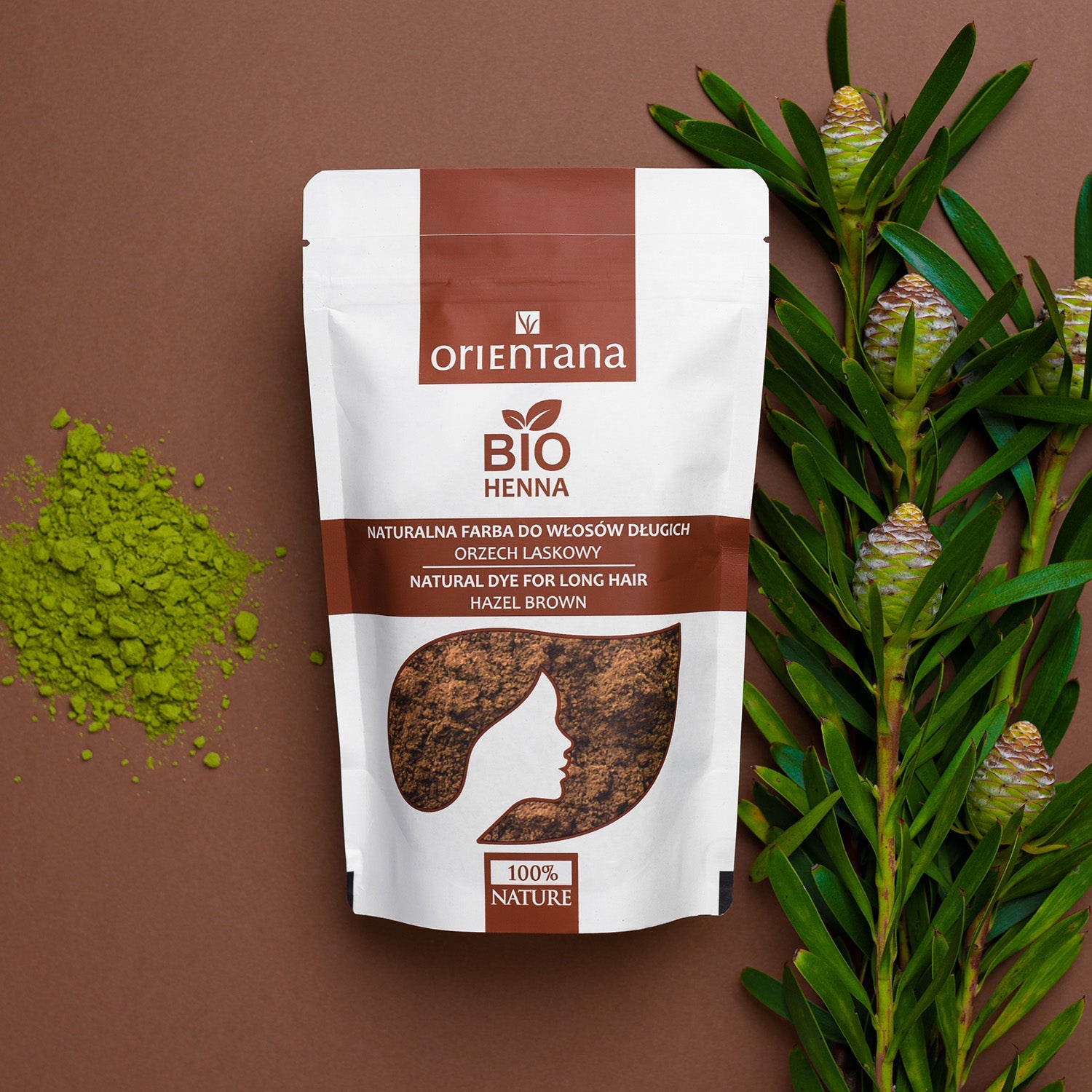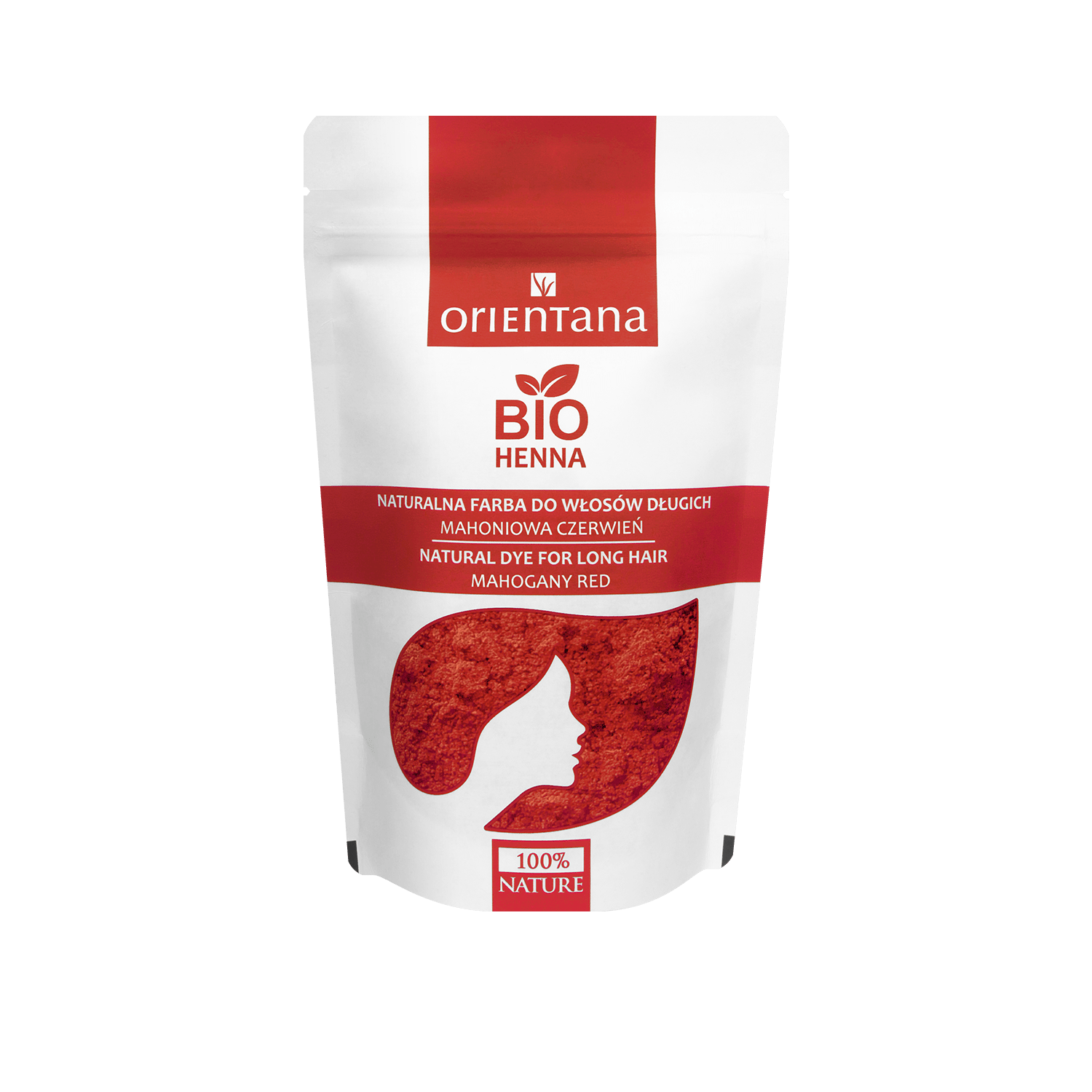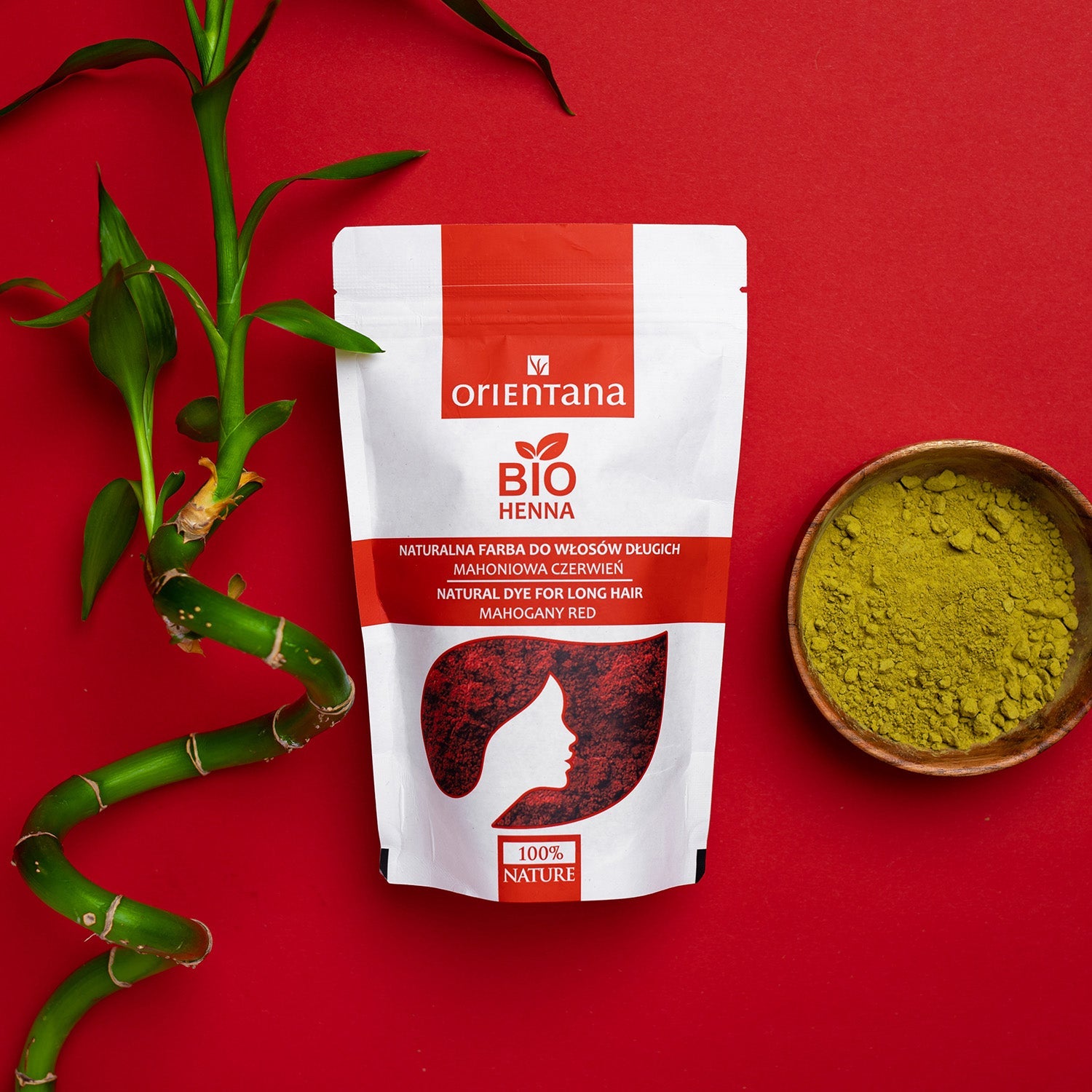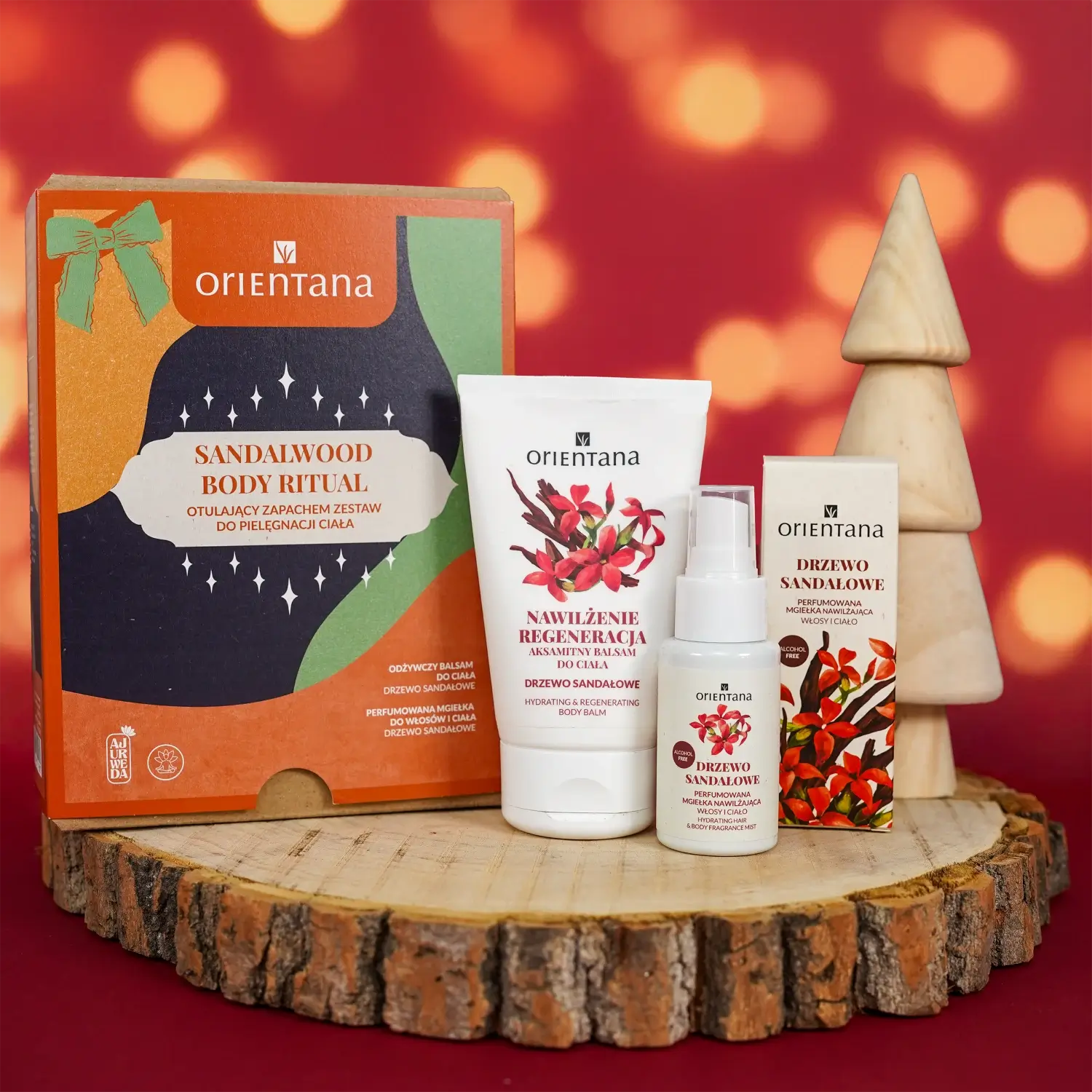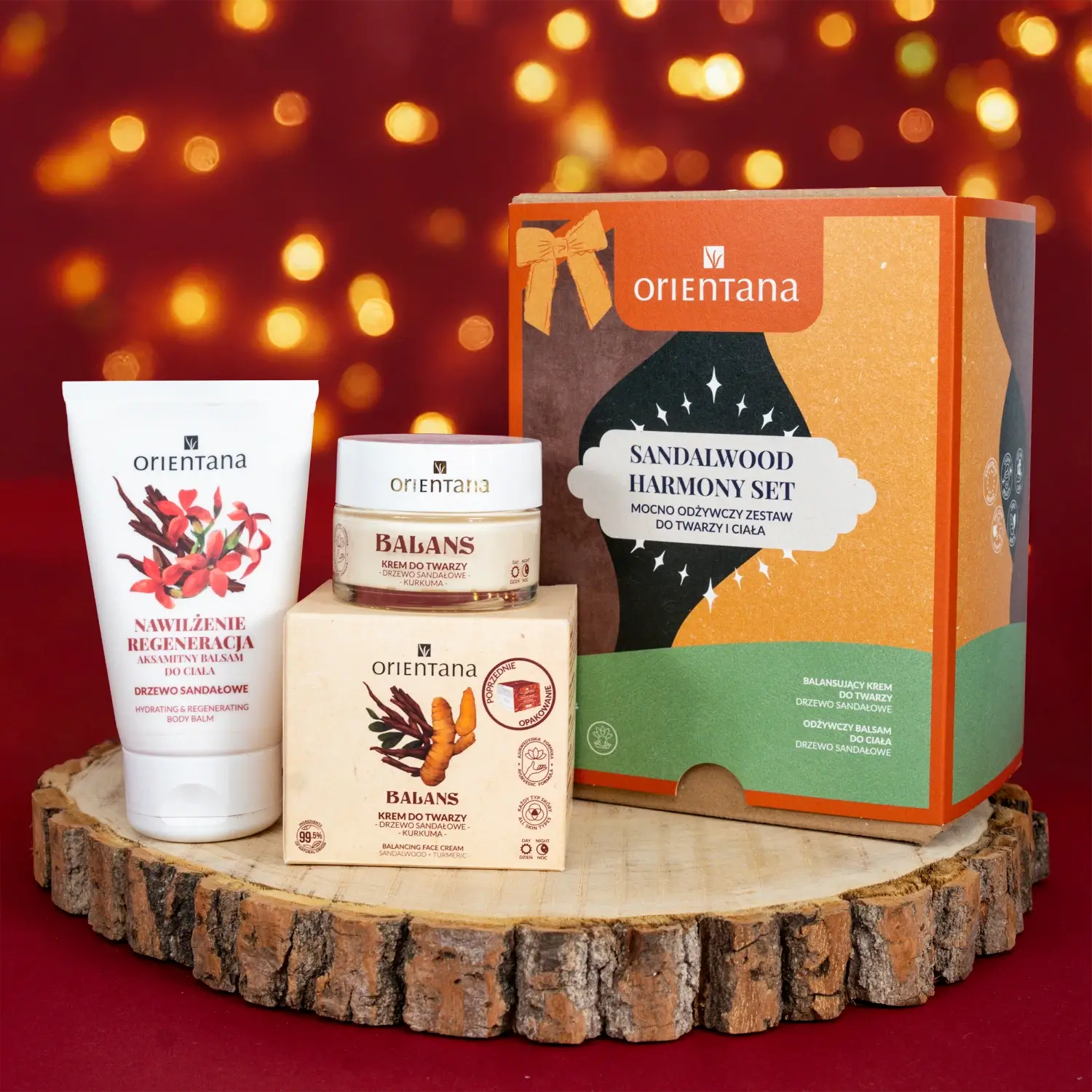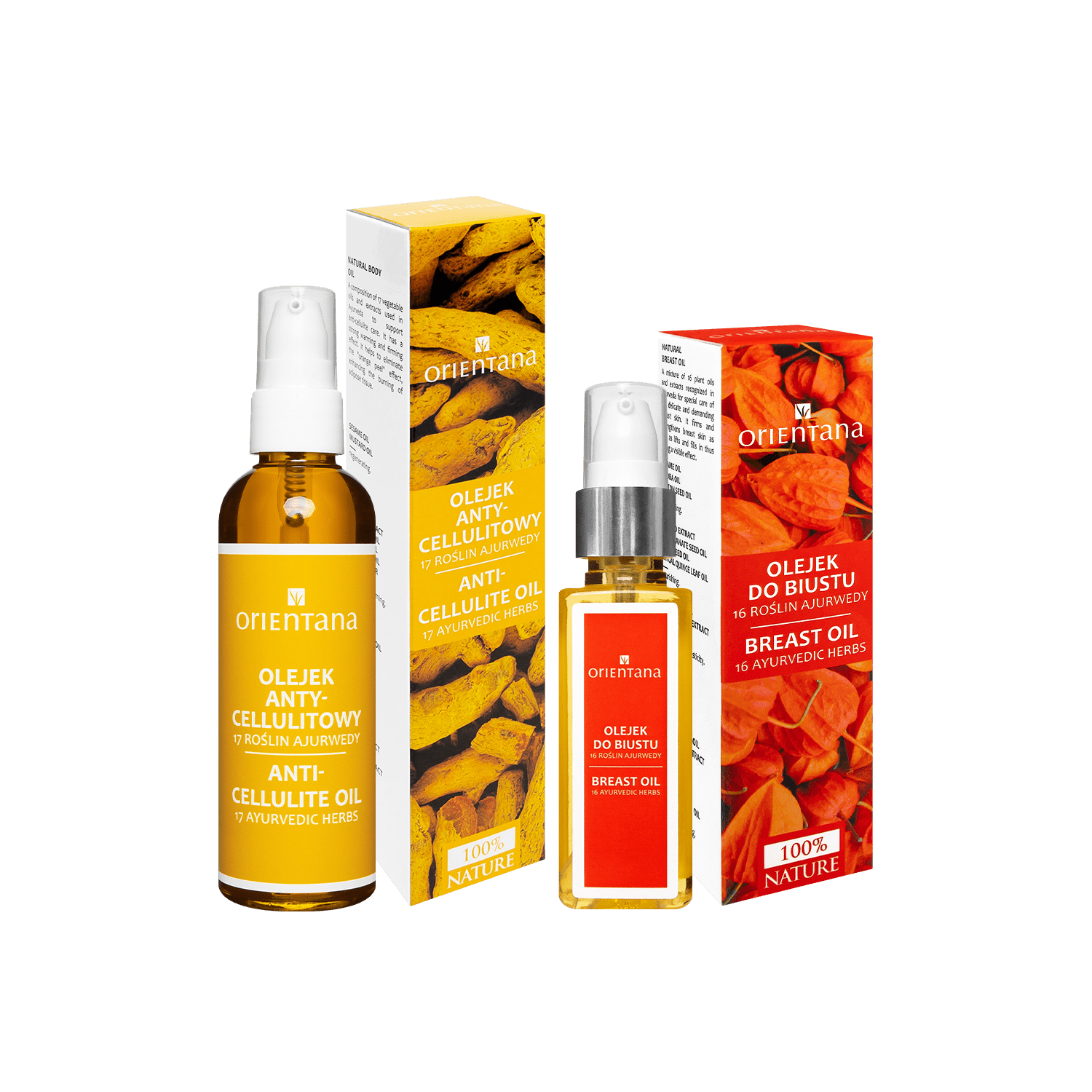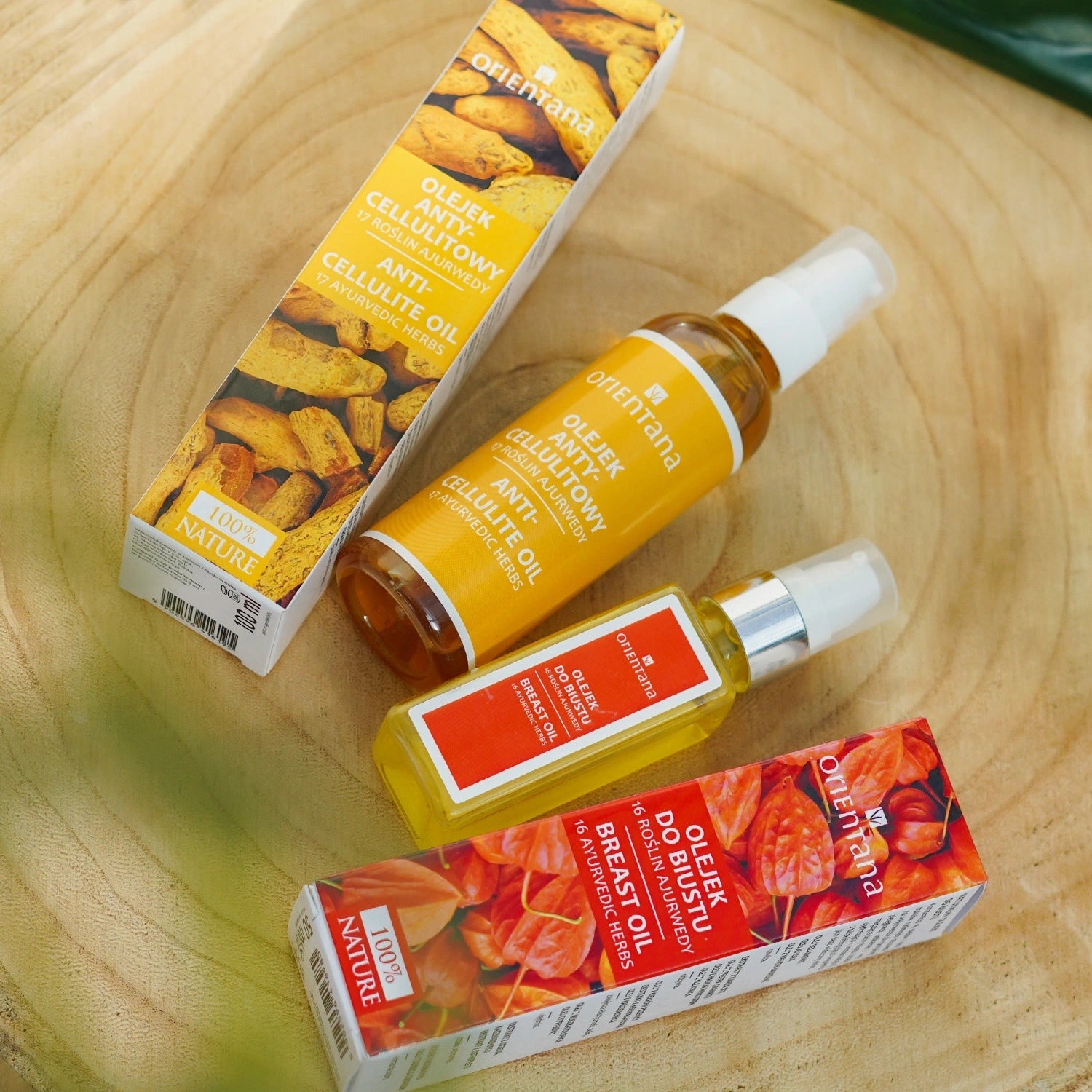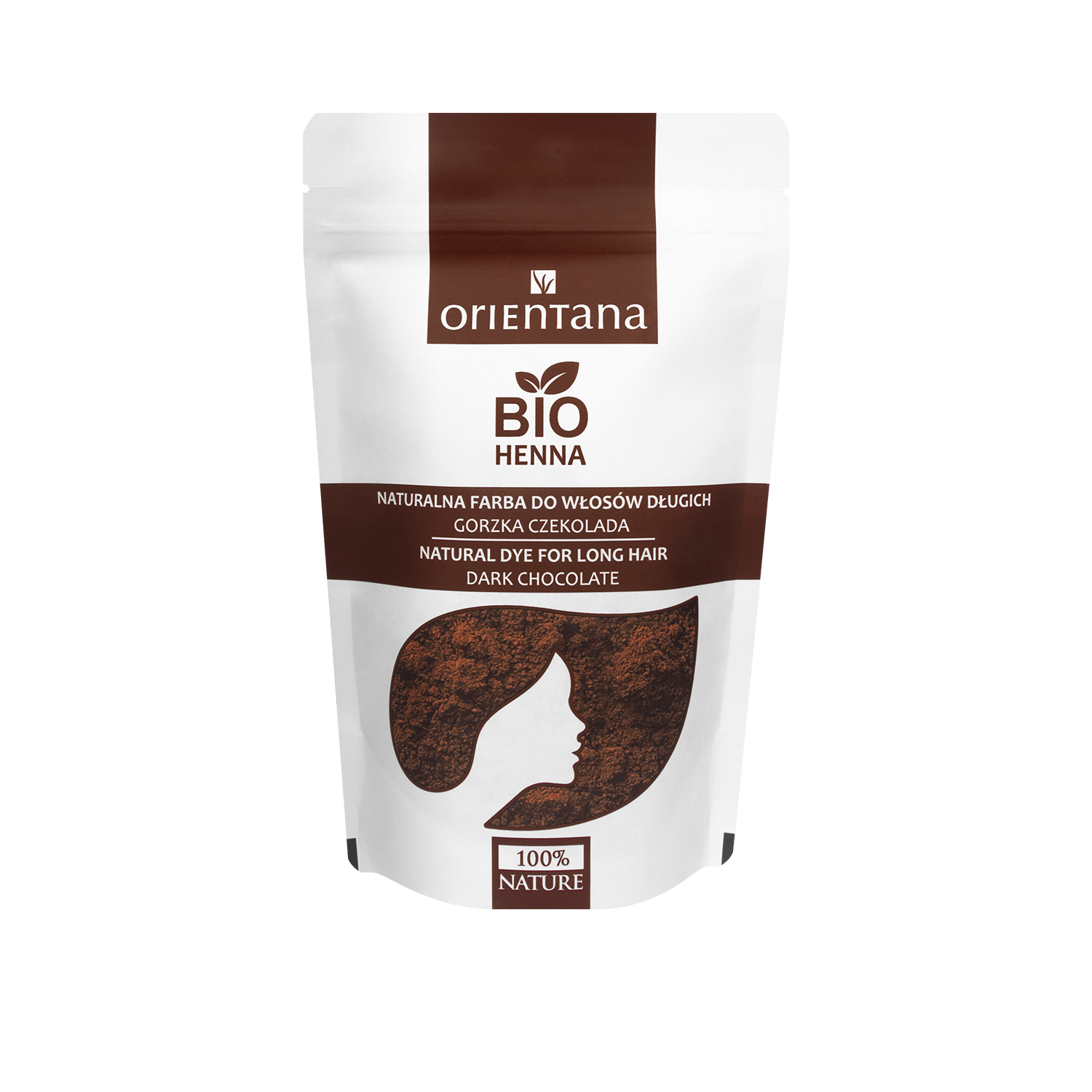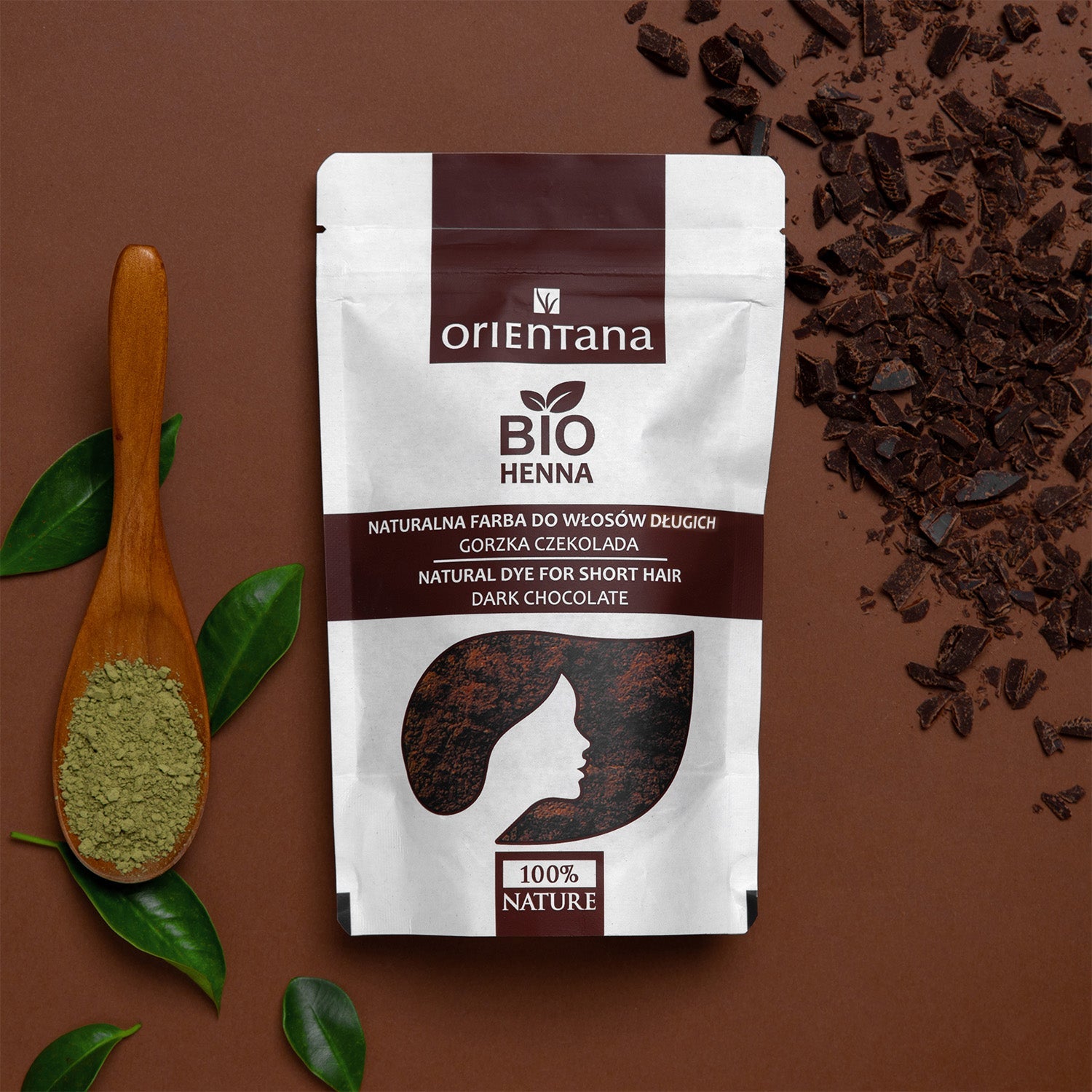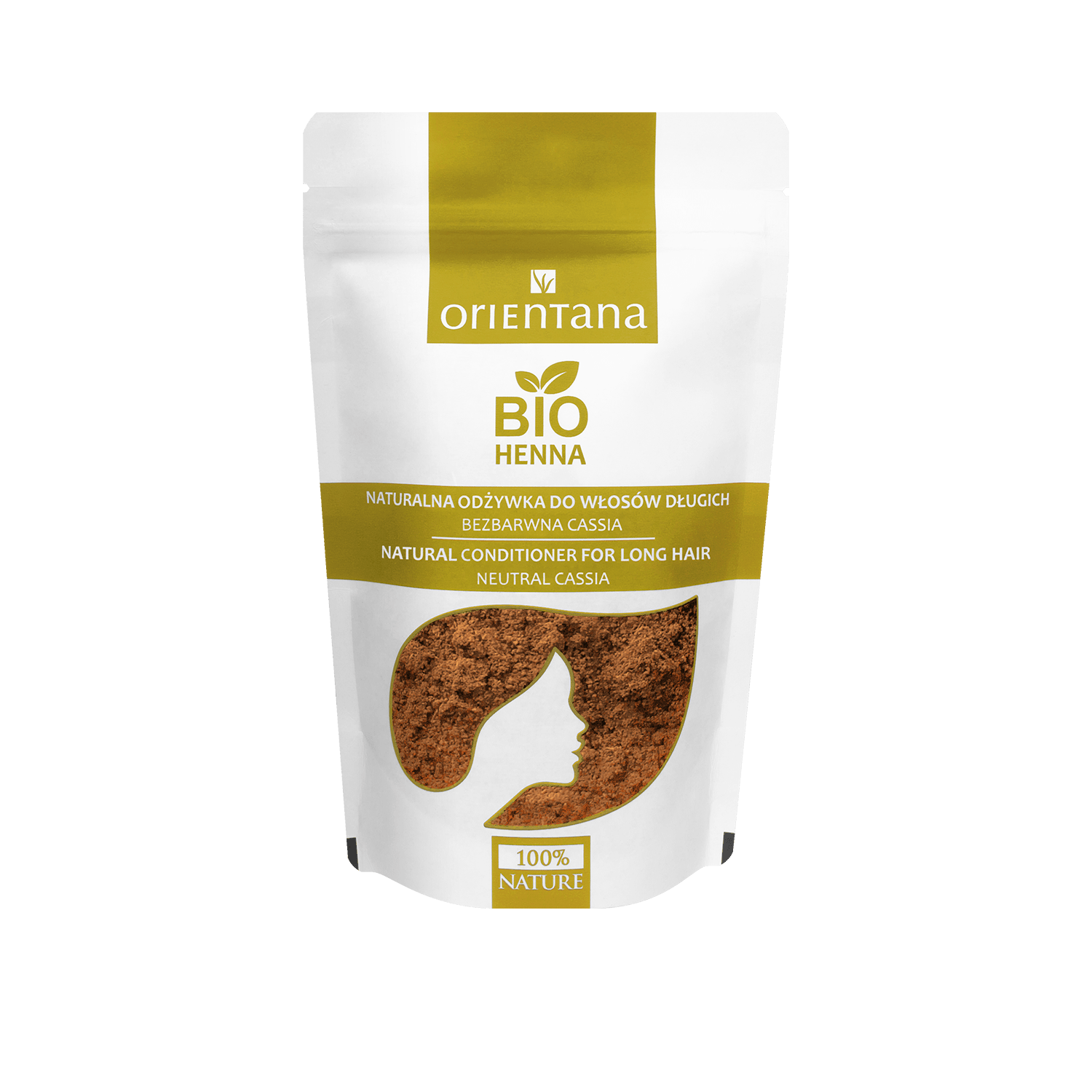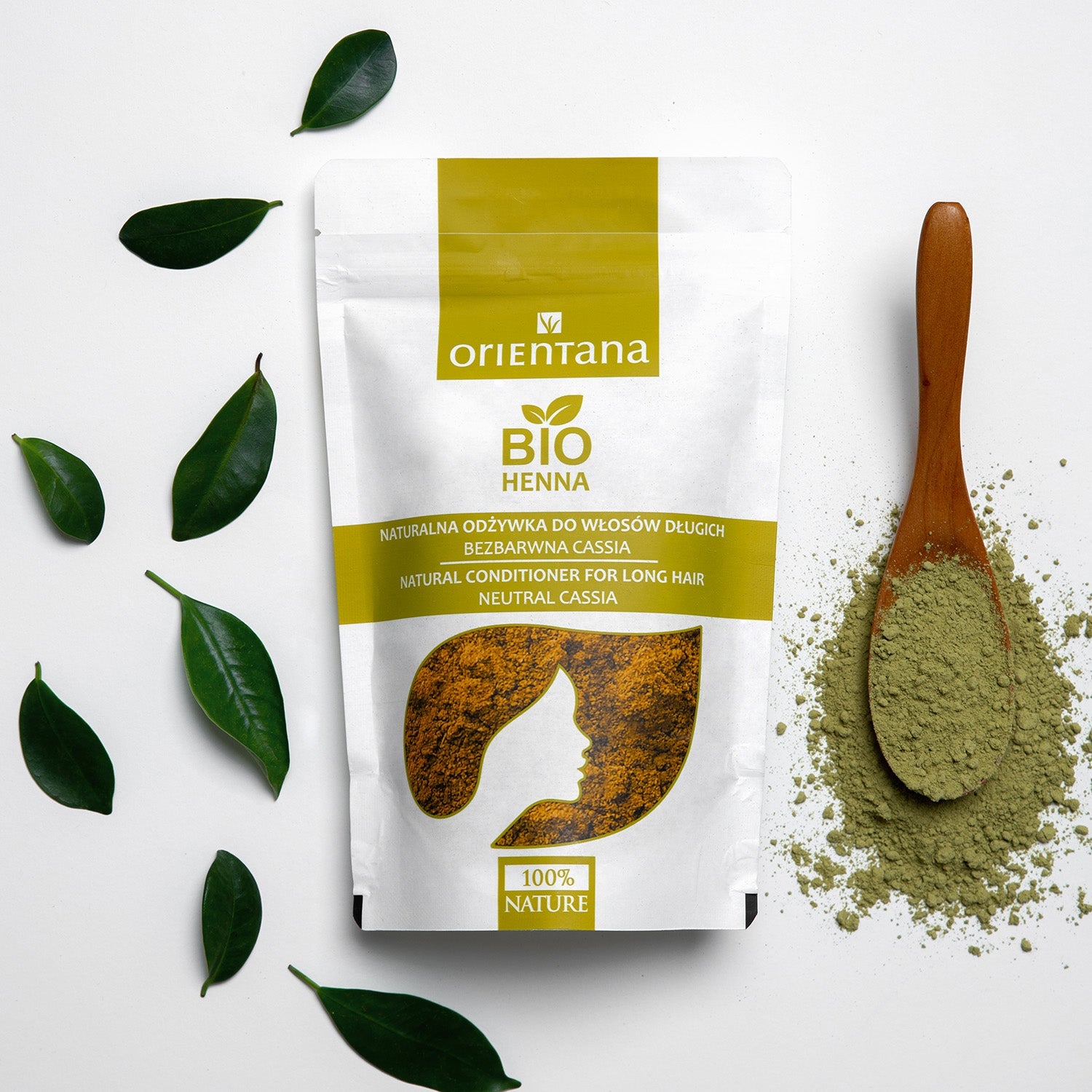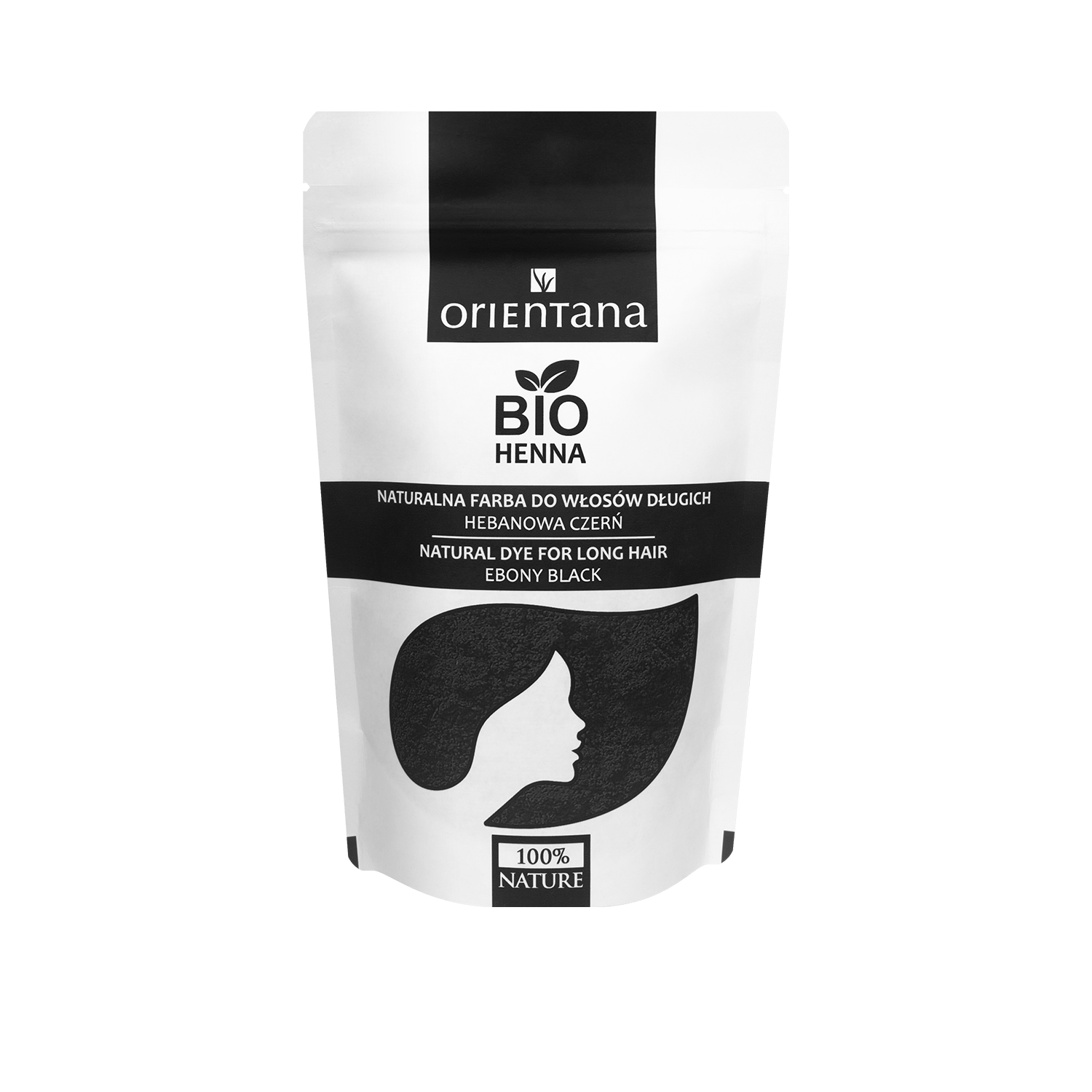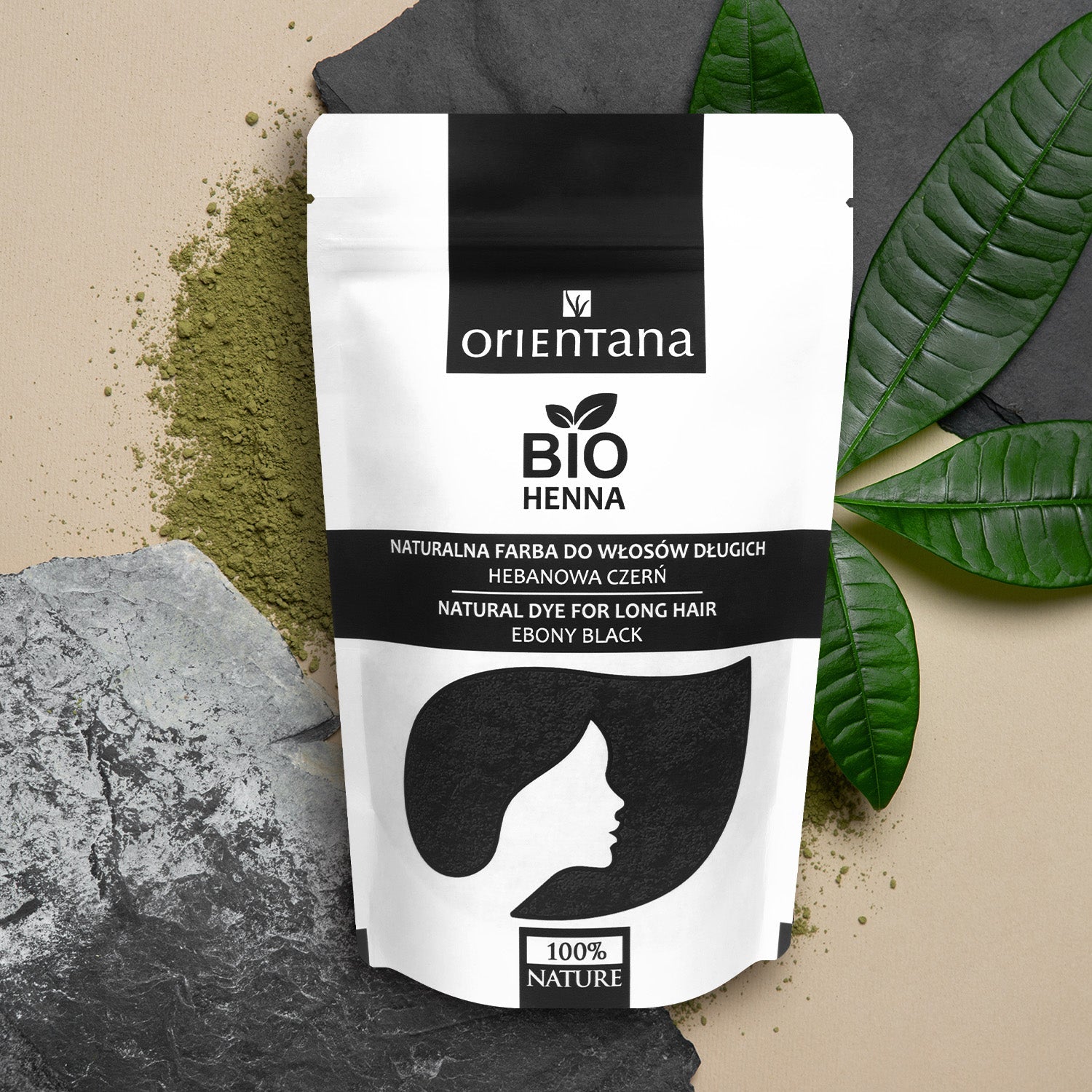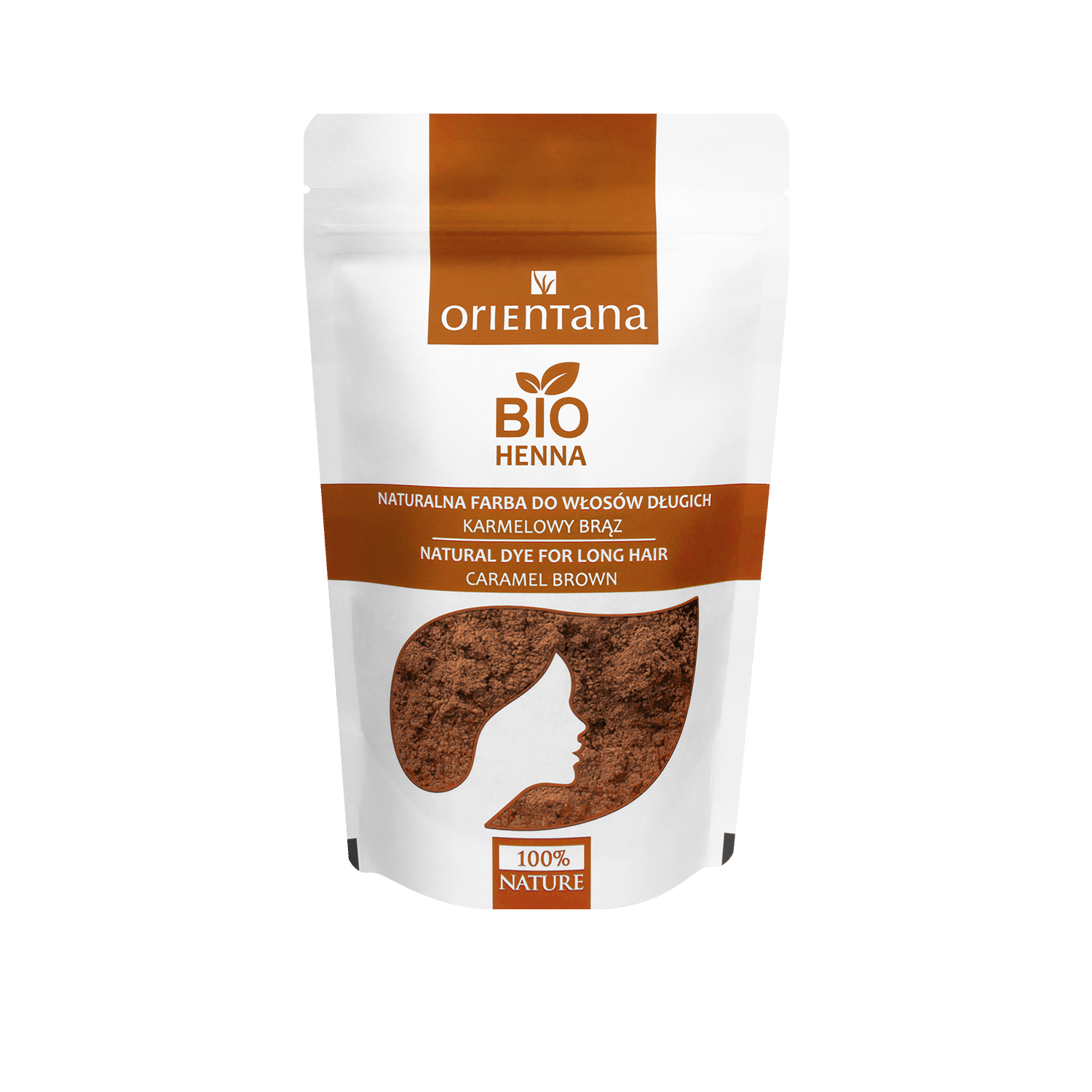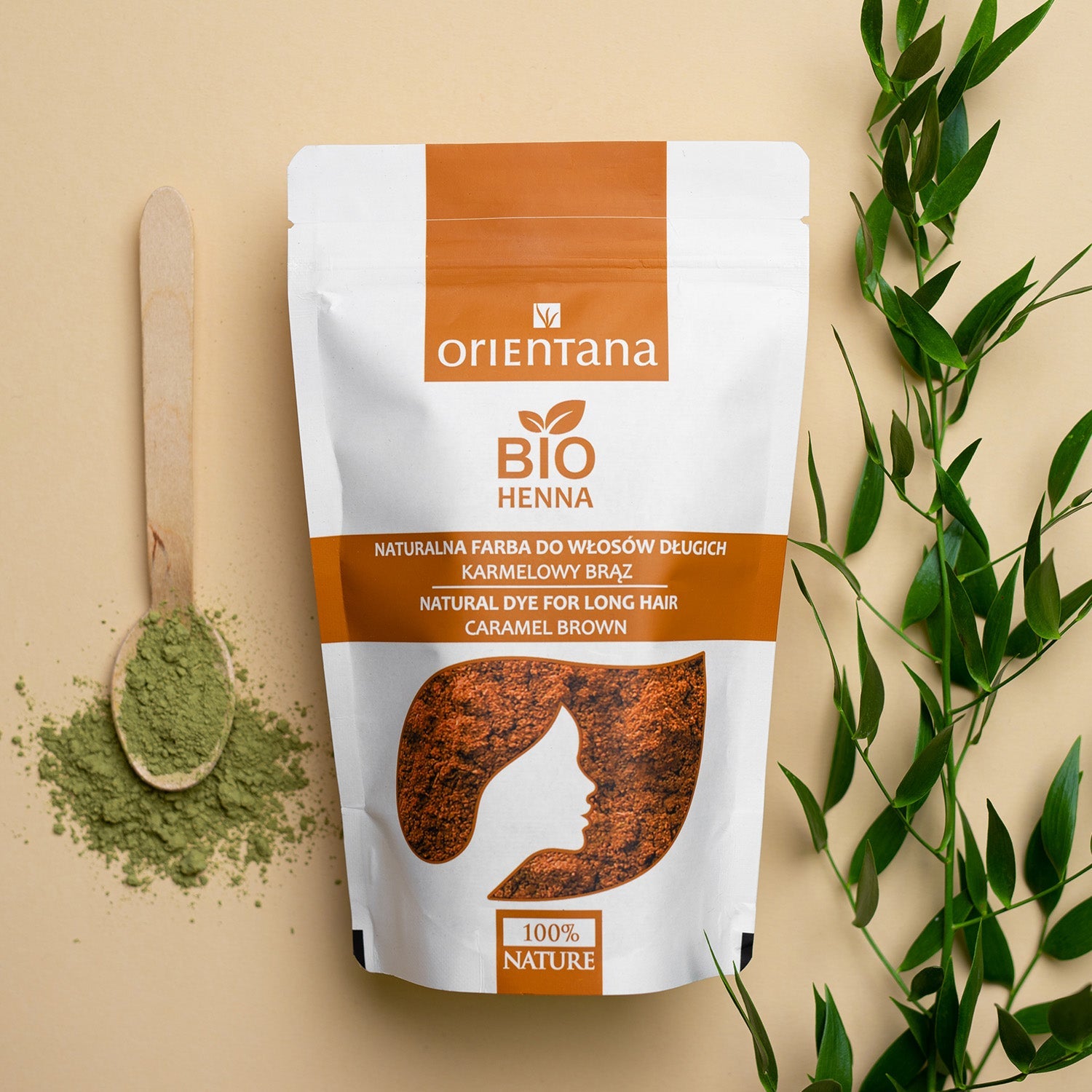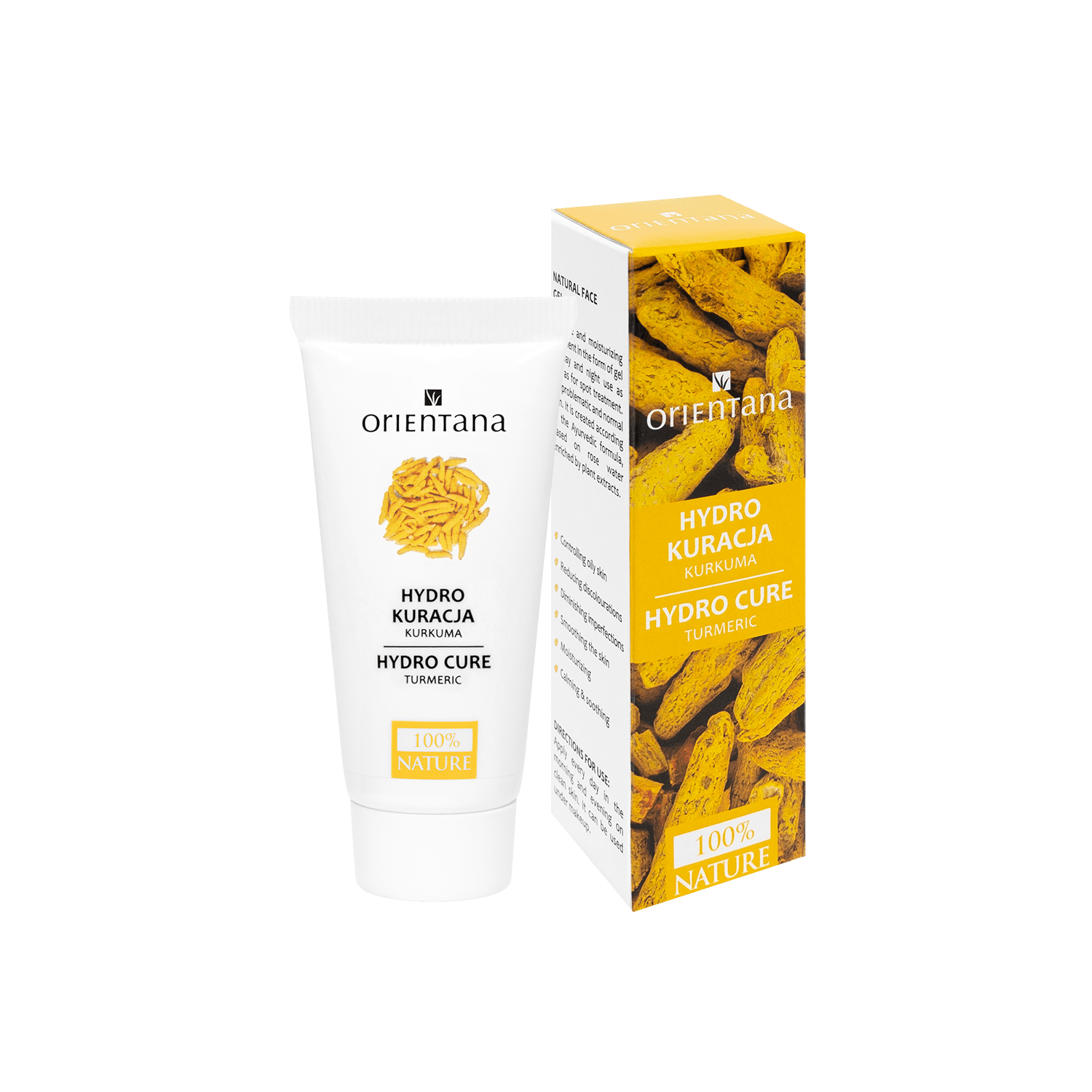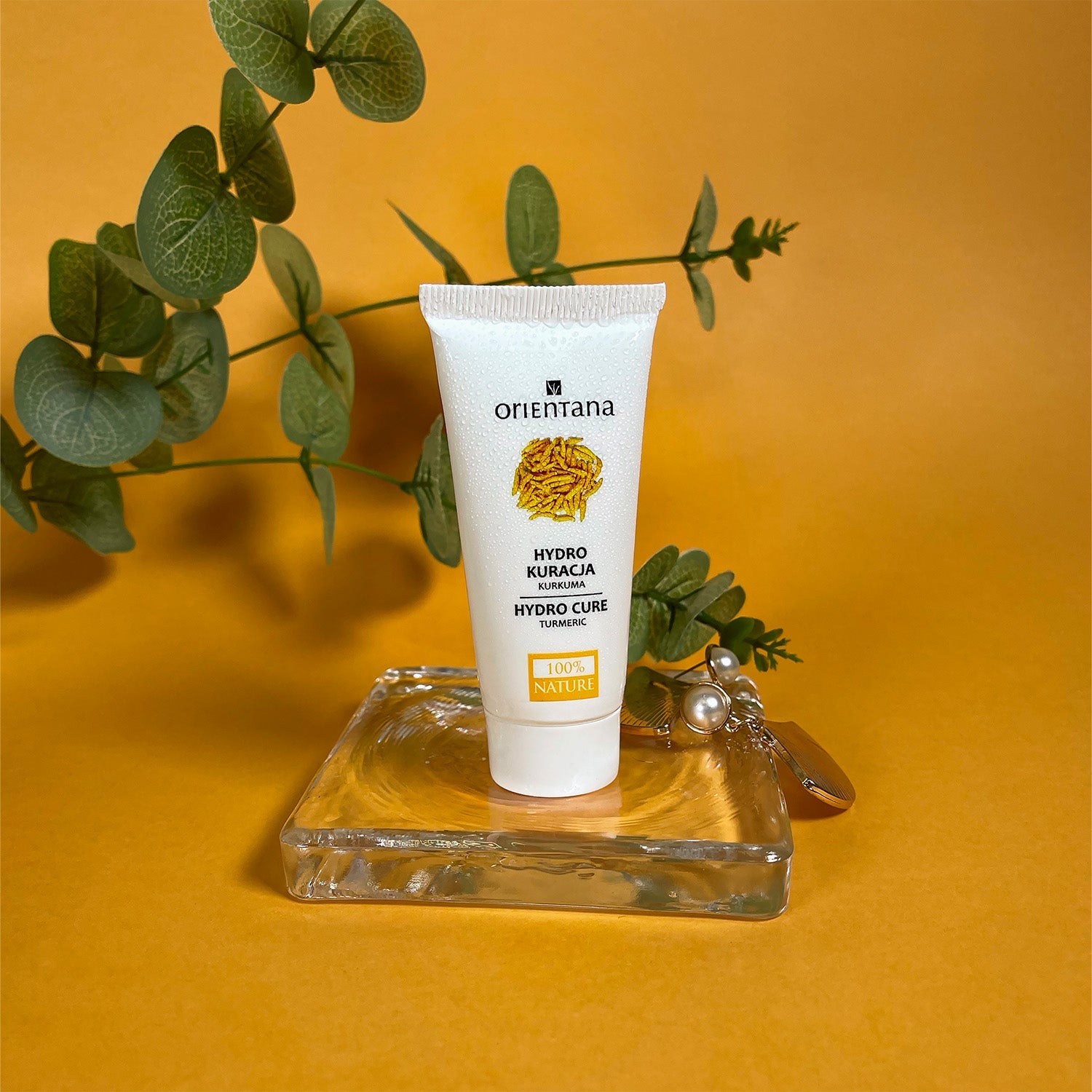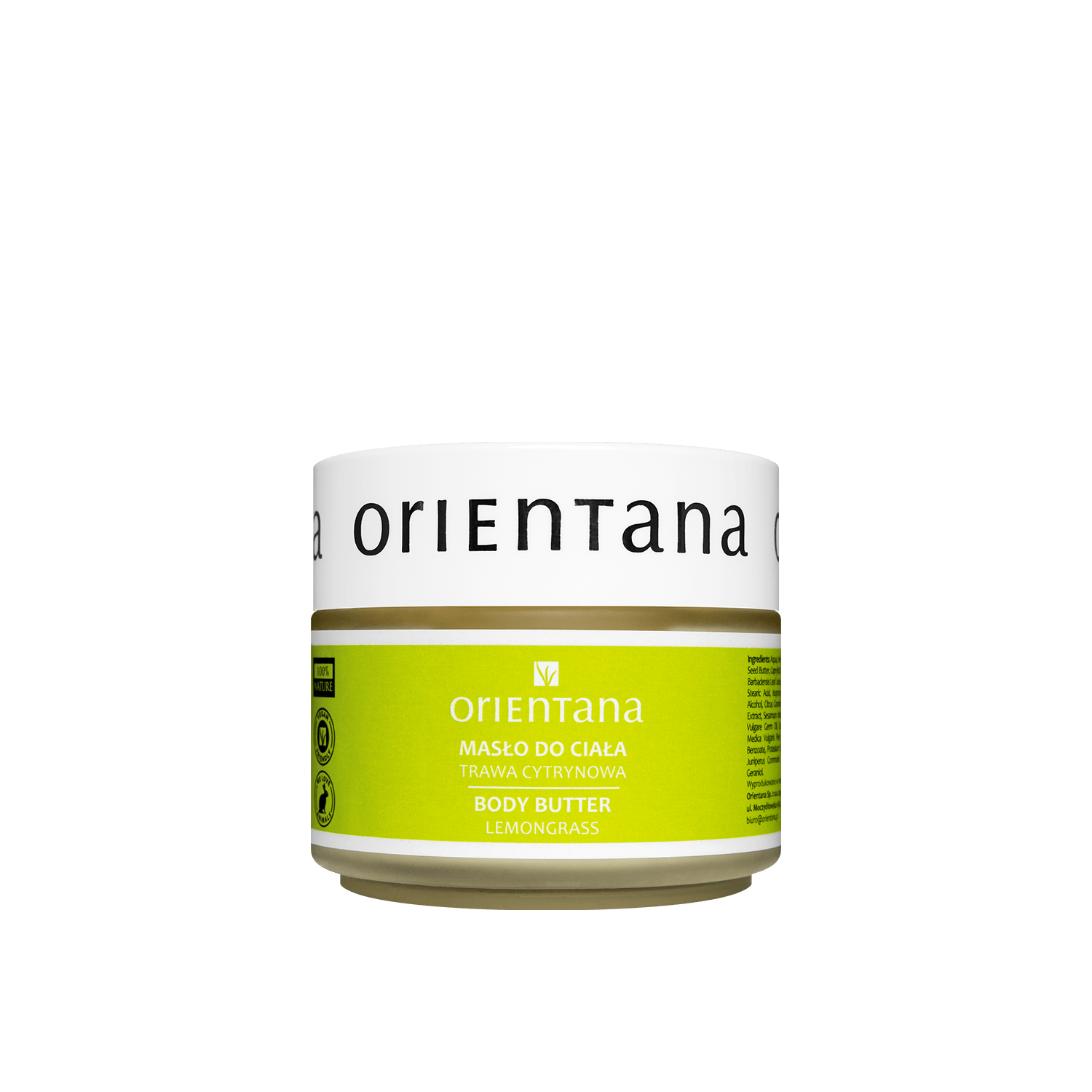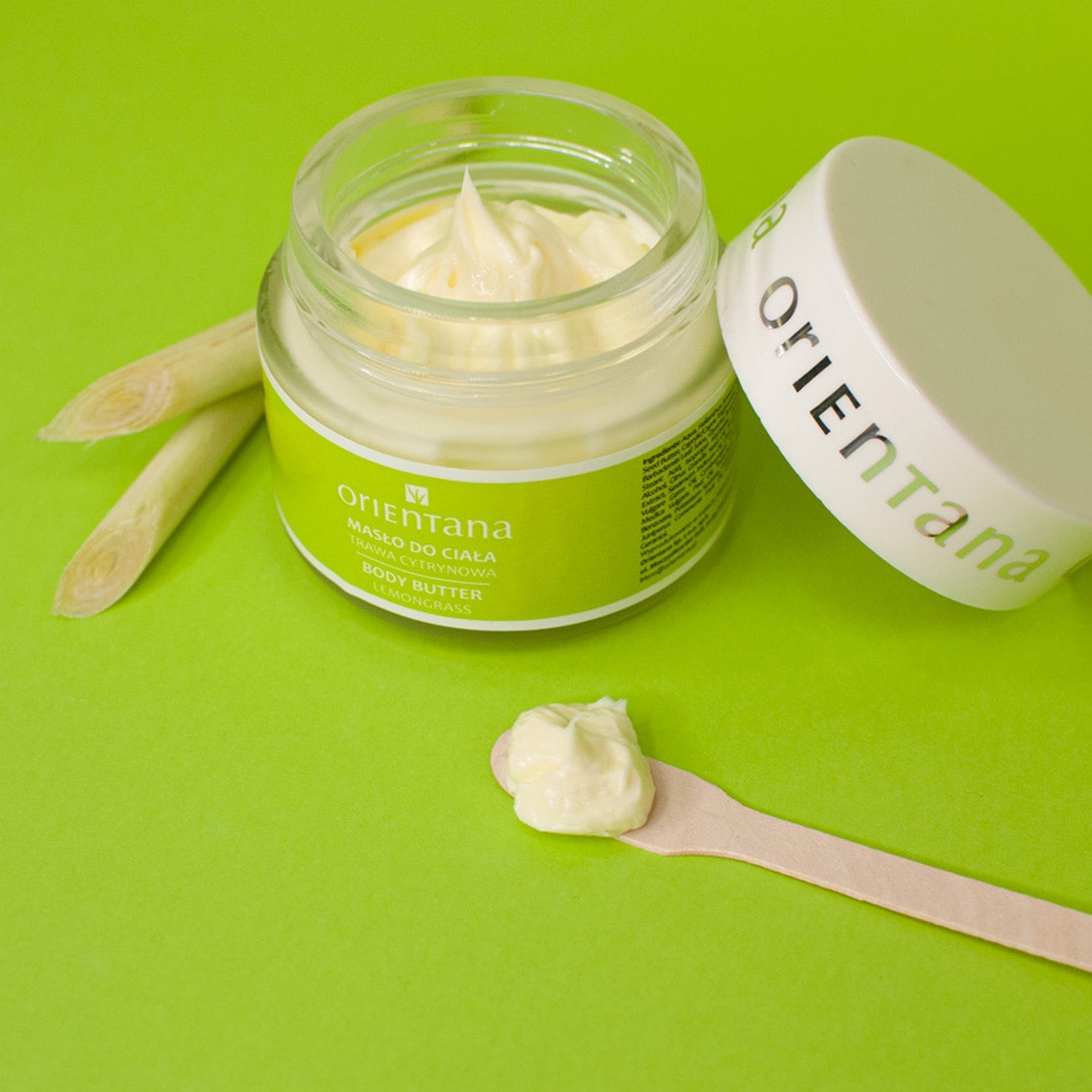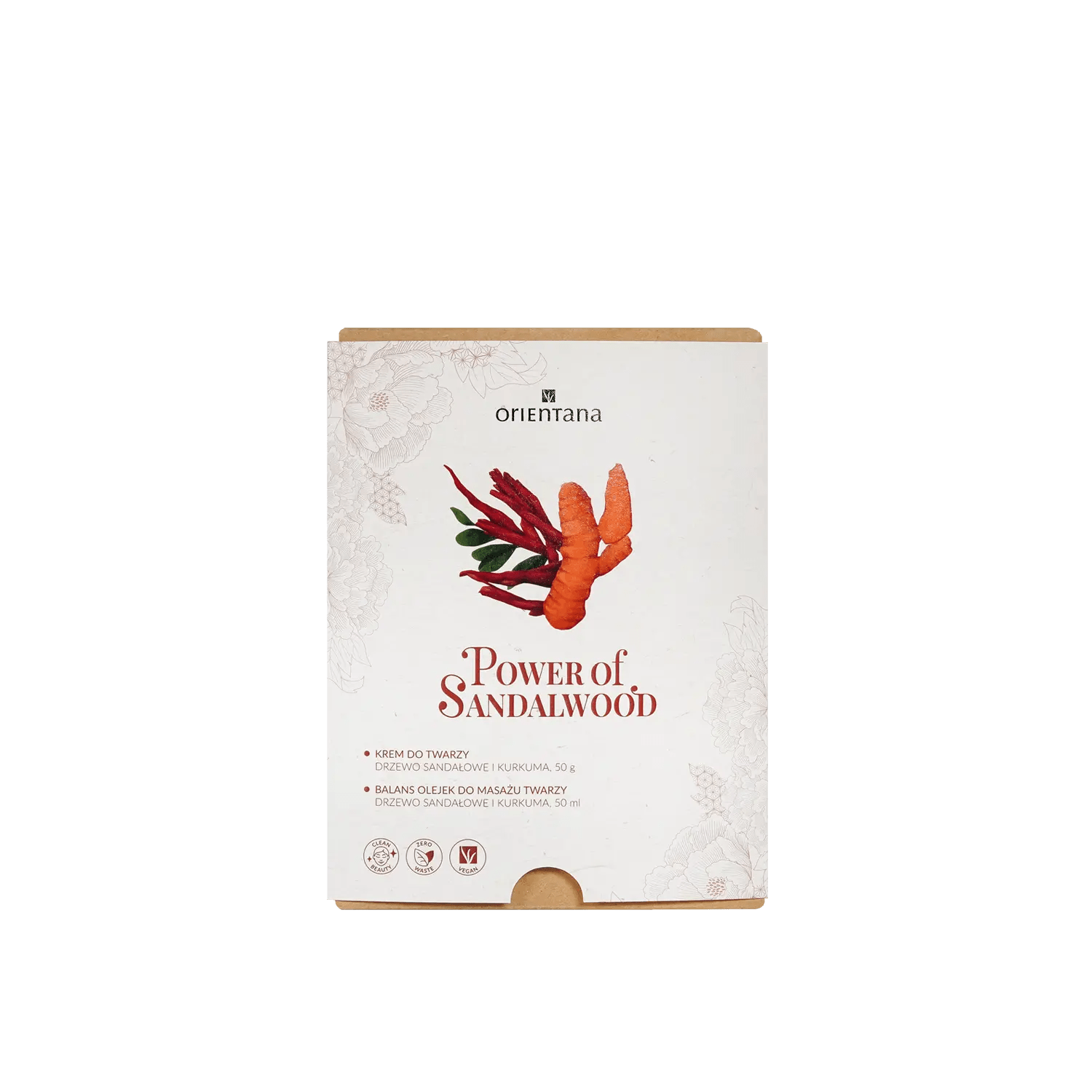bezpieczna płatność
Program lojalnościowy OrientKlub +
Darmowa dostawa od 129 zł
Próbki produktów do zamówień
Pełna oferta marki Orientana
Naturalne i przebadane składy
How Ayurveda cares for skin and hair
Ayurveda, an ancient system of Indian medicine, comes from a Sanskrit word meaning “knowledge of life.” Its foundation is a holistic approach to health, taking into account body, mind, and spirit. In this system, health is not just the absence of disease, but a state of harmony between the constitutional elements of the body and the external environment. This is holistic medicine. This system has developed over thousands of years and remains one of the most integrated and comprehensive approaches to prevention and therapy. One of the key assumptions of Ayurvedic medicine is the concept of three doshas – Vata, Pitta and Kapha – which represent basic biological energies. The balance of these doshas determines the overall state of health, and their imbalances can lead to various ailments, including those visible on the skin and hair. For example, the dominance of Vata can result in dry skin and brittle hair, an excess of Pitta often manifests itself as inflammation and oiliness, while a Kapha imbalance can lead to lymph stagnation, enlarged pores and heavy skin. That is why Ayurvedic care begins with an individual diagnosis of the constitution and adjustment of rituals and tapia to the needs of a specific body. In recent years, we have observed a dynamic growth in interest in these methods in the field of cosmetology and trichology. Both consumers and specialists are increasingly reaching for natural, herbal formulas based on centuries-old tradition. Ayurvedic therapies offer not only effective active ingredients, but above all an approach that takes into account the cause of the problem, not just its symptoms. Such a philosophy is becoming particularly valuable at a time when more and more people are looking for conscious, balanced and personalized care. Ayurvedic medicine is especially important for residents of India and Canada, where it is consideredAyurveda's Holistic Approach to Healthy Skin and Hair
We often hear that beauty comes from within – Ayurvedic medicine takes this literally. According to this ancient philosophy, the condition of our skin and hair is considered a reflection of the body’s inner harmony. In other words, our appearance acts as a mirror, showing the balance or imbalance of processes occurring within. When the three doshas (the basic biological energies of Vata, Pitta and Kapha) are in balance, our complexion radiates a healthy glow, and our hair is strong and shiny. However, when this inner harmony is disturbed – for example, through stress, poor diet or poor digestion – the consequences are quickly visible on the outside in the form of skin problems or weakened hair. Ayurvedic science treats such external signs as valuable clues to what is happening inside our body.Inner Balance: Agni, Ama and the Three Energies
Ayurvedic knowledge places great importance on digestion, metaphorically referred to as Agni, or “digestive fire.” Strong Agni ensures that food is digested well and transformed into valuable nutrients for the entire body. This provides skin cells and hair follicles with everything they need to regenerate and stay healthy. On the other hand, a weakened or imbalanced digestive fire means that some food is not fully digested and turns into a sticky, toxic substance called Ama in Indian medicine. These toxins circulate in the body, contaminating tissues – this often manifests itself in skin problems (gray complexion, pimples), because the body tries to excrete excess Ama through the skin. Ayurvedic doctors believe that cleansing the body of toxins and strengthening Agni is key to improving the condition of the skin. Equally important for the condition of the skin and hair is the balance of energy: Vata, Pitta, Kapha. The doshas are three fundamental life forces describing the types of body structure and the processes occurring in it. Each of them corresponds to specific elements - Vata is associated with space and air (movement, lightness), Pitta with fire (heat, metabolism), and Kapha with water and earth (heavyness, structure). Each of us has a unique constitution (prakriti), i.e. individual proportions of these three energies, which affects physical features, temperament, and even the appearance of the skin and hair. When the doshas are in harmony, the body functions efficiently - digestion works flawlessly, nutrients reach the tissues, and the complexion and hair maintain a natural balance. However, a disproportion of any of the energies disturbs this balance and leads to specific ailments. Ayurvedic medicine emphasizes that by observing the condition of the skin and hair, you can recognize which energy is disturbed and requires restoring the balance.When energies are imbalanced: symptoms on skin and hair
Here are examples of how an excess of any of these energies can affect the condition of your skin and hair: The energy of movement, the element of air - its excess (e.g. due to chronic stress, irregular lifestyle or cold, dry weather) often manifests itself in dryness and roughness of the skin . The complexion then loses its shine, becomes thin, dull, is prone to flaking, cracking and even premature wrinkles. Hair with increased Vata also suffers from a lack of moisture - it becomes dry, brittle, fragile, with a tendency to split ends. It can also fall out excessively, even in handfuls, and its growth can be slowed down. People with such an imbalance often notice brittle nails and dry lips - these are all signs that the element of air dominates in the body, which "dries out" the tissues. Fire energy – when it is too high (e.g. due to an excess of hot spices, heat or strong emotions), it brings excess heat into the body. Skin with a predominance of Pitta can be hot, red and hypersensitive . Inflammations often appear: pimples, redness, acne and even rashes or hives. A person with severe Pitta may have skin that is prone to oiliness and irritation at the same time – typical are e.g. red spots or rosacea. Hair, on the other hand, suffers from excess “fire” at the roots: heat weakens the hair follicles, which translates into their thinning and loss. Fire energy can also accelerate premature greying of hair or even lead to baldness, because excess hot energy gradually damages the pigment and structure of the hair. So if someone's skin reddens easily and is prone to breakouts, and their hair loses density, Ayurvedic treatment methods suggest calming the fiery Pitta (e.g. through a cooling diet and herbs). Earth and water energy - its excess (e.g. due to overeating heavy, sweet foods and lack of exercise) causes excessive oiliness and stagnation in the body. The skin with dominant Kapha becomes thicker, oily to the touch, often paler or devoid of a healthy color. Blackheads appear (both blackheads and white lumps) and a tendency to clog pores. Also typical are oily pimples, sometimes of a cystic nature (deep subcutaneous lesions). The face may appear swollen or heavy . Hair with an excess of this energy is naturally thick and strong, but quickly becomes oily and flat. The scalp may be prone to dandruff (oily dandruff) due to the excess of sebum secretion. In general, an excess of this earthy-watery energy gives the effect of excessive burden - both in the body (e.g. a feeling of heaviness) and in the appearance of the skin and hair, which lose their freshness. It is worth remembering that the above symptoms often occur in mixed forms, because the doshas influence each other. However, recognizing the dominant features allows you to see which energy is unbalanced. This in turn indicates the way to solve the problem. The principles of Ayurveda recommend treatment from the inside - restoring harmony through a proper diet, herbs and lifestyle changes - instead of just masking the symptoms on the outside. So instead of reaching only for more creams or cosmetics, the holistic approach of Ayurveda suggests taking care of yourself holistically: strengthening digestion, cleansing the body of toxins and restoring energy balance. When the body regains harmony, the skin will reward you with a radiant appearance, and hair - with strength and shine, because beauty is a natural effect of health flowing from the inside.Ayurvedic therapies - herbs
Ayurvedic science has been using natural botanicals for centuries to support healthy skin and hair in a safe and sustainable way. Its approach is based on the use of herbs, spices and oils that have nourishing, cleansing and energy-balancing properties. Interestingly, many of these ingredients are now being scientifically proven to be effective, especially in terms of their anti-inflammatory, antioxidant and regenerative effects. Below, we will take a look at selected botanicals and their uses in Ayurvedic skin and hair care products.Skin Care Ingredients
The best Ayurvedic products contain herbs such as: Turmeric (Curcuma longa) It is not only a popular spice, but also a natural "gold" in skin care. Its main active ingredient - curcumin - has strong anti-inflammatory, antibacterial and brightening properties. In Ayurvedic medicine, turmeric is used to combat discoloration, pimples and signs of aging. Curcumin neutralizes free radicals, supports the regeneration of the epidermis and gives the skin a healthy, even color. Sandalwood (Santalum album) Sandalwood in powder or oil form is valued for its cooling and soothing effects. In Ayurvedic therapies, it is considered particularly beneficial for Pitta skin, which is prone to irritation and inflammation. Sandalwood helps reduce redness, has an astringent effect and has gentle antiseptic properties. Its pleasant scent also has a soothing effect on the nervous system. Ashwagandha Ashwagandha ( Withania somnifera ), also called "Indian ginseng" or "elixir of youth" is one of the most valuable adaptogenic herbs in traditional Indian medicine. It neutralizes free radicals responsible for accelerated skin aging. Thanks to this, it delays the formation of wrinkles, loss of firmness and tired appearance of the skin. It helps to soothe redness, reduce blemishes and supports natural healing processes. Neem (Azadirachta indica) Neem, also called the “royal purifier,” is one of the most important herbs for skin problems. It has strong antibacterial, antifungal, and cleansing properties. Applied externally in the form of a paste or oil, it helps treat acne, psoriasis, and inflammation. Modern research confirms its anti-inflammatory and antioxidant effects, which help soothe irritations and improve skin healing.Herbs for hair care
Ayurvedic hair products often contain the herbs described below. Bhringraj (Eclipta alba) Called the “king of hair,” bhringraj plays a key role in scalp care and hair loss prevention. It contains phytosterols and flavonoids that support microcirculation and oxygenation of hair follicles. Regular use of bhringraj oil strengthens hair at the roots, accelerates hair growth, and can also delay graying. Studies indicate that it has anti-inflammatory and stimulating effects on hair follicle cells. Amla (Emblica officinalis) In addition to its effects on the skin, amla is also one of the most important herbs in hair care. It supports the production of collagen and keratin, strengthens hair follicles, and gives hair shine and elasticity. Thanks to its high content of vitamin C and tannins, amla has antioxidant effects that help protect hair from environmental stress and free radicals. Shikakai (Acacia concinna) Shikakai is a natural cleanser, traditionally used instead of shampoo. It gently cleanses the scalp without disturbing its natural pH, making it ideal for those with sensitive or dry skin. It contains saponins, which act as a mild detergent while providing hair with essential nutrients. Regular use of shikakai can reduce oiliness and improve hair texture. Brahmi (Bacopa monnieri) Brahmi is known primarily as a herb that supports the nervous system, but its use in hair care also makes perfect sense. The holistic approach of Ayurveda emphasizes that emotional stress negatively affects the condition of the scalp and hair follicles. Brahmi has a toning effect, improves blood circulation in the scalp and strengthens the hair. Bacopa monnieri can also soothe irritation and reduce tension, which often accompanies nervous alopecia. Methi (fenugreek) Fenugreek seeds are rich in lecithin, proteins, and B vitamins, which promote hair growth and improve hair density. Methi also has moisturizing and anti-inflammatory properties. Applied in a paste or as an ingredient in scalp massage oils, it strengthens hair from the roots and reduces breakage. Modern research suggests that fenugreek may also have a beneficial effect on hormonal causes of hair loss. Gotu Kola (Asian Pennywort) Thanks to its properties that stimulate microcirculation in the scalp, it supports better oxygenation and nourishment of the hair follicles, which can translate into faster hair growth and their overall strengthening. Gotu kola also has anti-inflammatory and antioxidant effects, which helps soothe scalp irritation, reduce dandruff and limit hair loss associated with stress or inflammation. Natural Indian medicine offers a wide range of plant ingredients that, when properly selected for skin and hair type, can work just as effectively as modern cosmetics, while supporting health in a natural and safe way. They are also increasingly the subject of clinical studies that confirm their traditional uses. For those seeking conscious care, Asian herbs can be not only a supplement, but also the foundation of daily beauty rituals.Ayurvedic holistic approach - care rituals
Ayurvedic therapies see daily care as something much more than just a cosmetic procedure. It is an element of self-care that helps restore inner balance, reduce stress and strengthen the body's natural regenerative processes. Among many care practices, rituals using oils and natural herbal recipes - Ayurvedic massage - occupy a special place. Performed regularly, it can bring not only an improvement in the appearance of the skin and hair, but also a positive effect on well-being and mental health.- Abhyanga – full body oil massage
- Ubtan - herbal cleansing paste
Ayurvedic Treatment Methods - Diet and Lifestyle
Indian medicine emphasizes that external appearance is a direct reflection of internal balance. Therefore, beautiful skin and strong hair do not start with a beautician, but with what we eat, how we breathe and how we function every day. According to this tradition, a conscious diet, circadian rhythm and emotional care are the foundations of lasting beauty. Below we describe the most important aspects of lifestyle and nutrition according to the system of holistic medicine, which have a real impact on the condition of the skin and hair.- A diet tailored to your energy type – the key to harmony
- Spices as natural allies of beauty
- Yoga and meditation – mind balance, body harmony
Daily facial care in Ayurveda
Ayurveda, although rooted in ancient tradition, offers a surprisingly up-to-date approach to daily care. Its rituals are simple, natural and tailored to the individual needs of the skin. Key steps such as cleansing, toning, nourishing and moisturizing create a coherent whole - not only improving the appearance of the complexion, but also supporting the health of the entire body. In Ayurveda, care is not an obligation, but a form of mindfulness and self-care.- Cleansing – gently but effectively
- Toning – restoring balance
- Nutrition – feeding your skin with plant power
- Moisturizing – retaining moisture and balance
Hair care
Hair care is a holistic approach that combines natural plant ingredients with balancing the body's energy. The goal is not only beautiful hair, but also a healthy scalp, internal balance and eliminating the causes of problems such as hair loss, dryness or oiliness.- Natural hair washing
- Washing your hair
- Natural oiling
- Herbal lotions and masks
- Head massage (shiro abhyanga)


